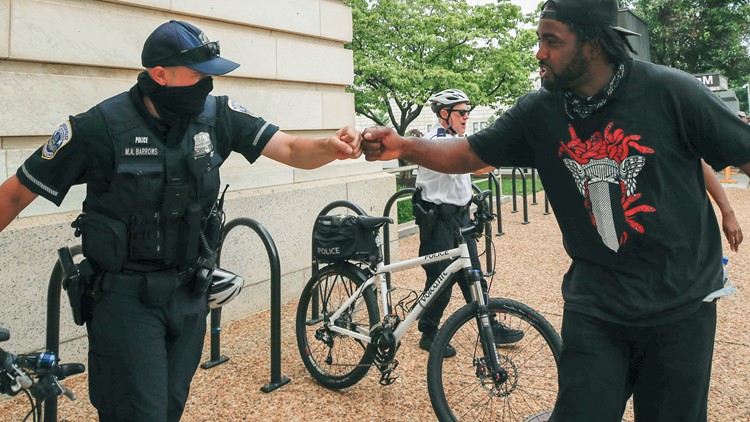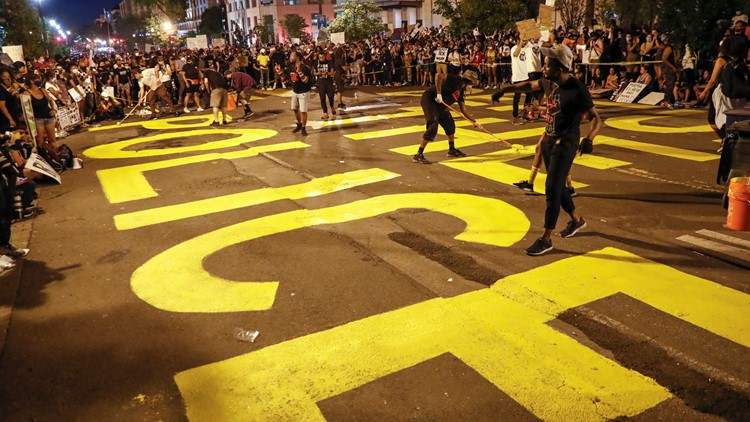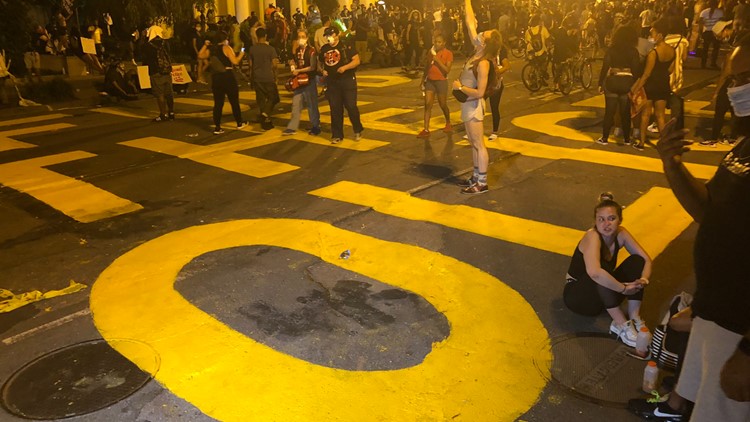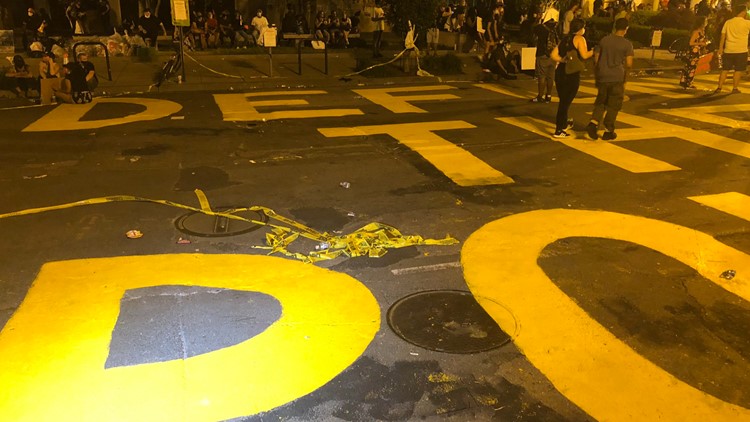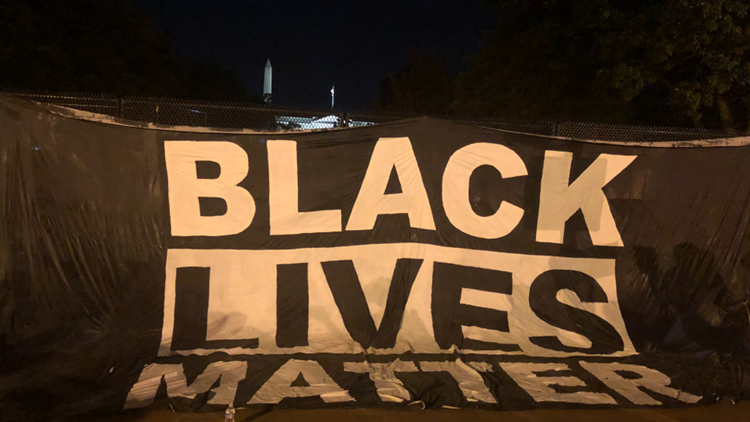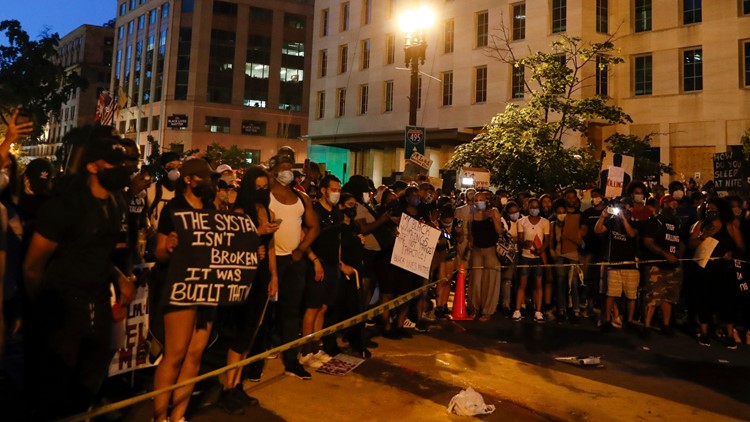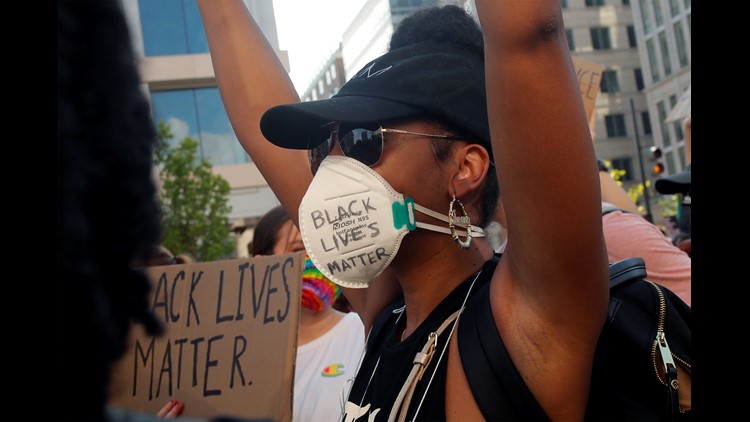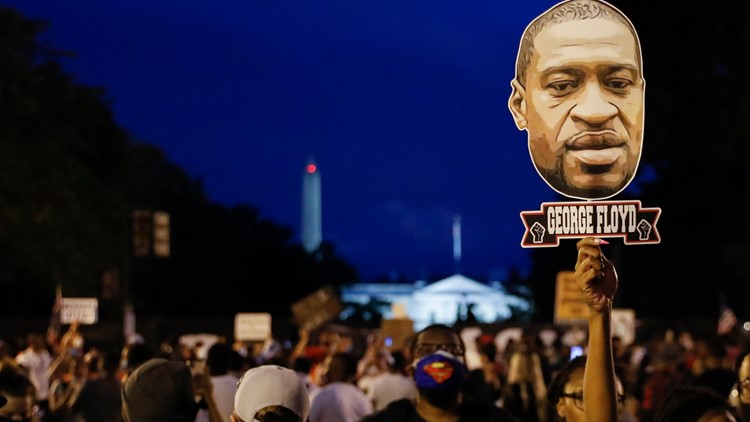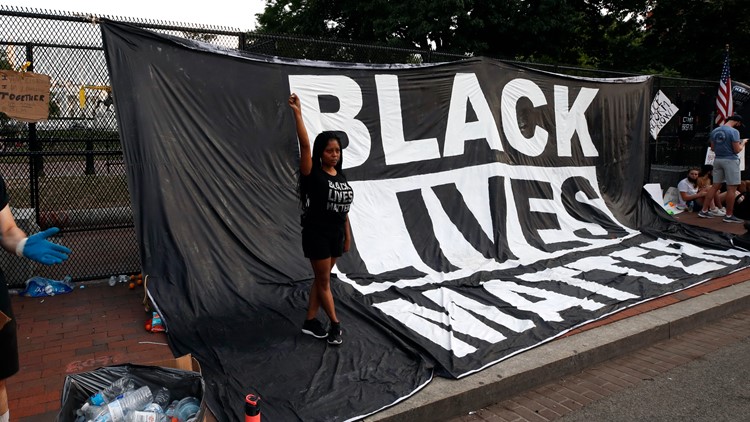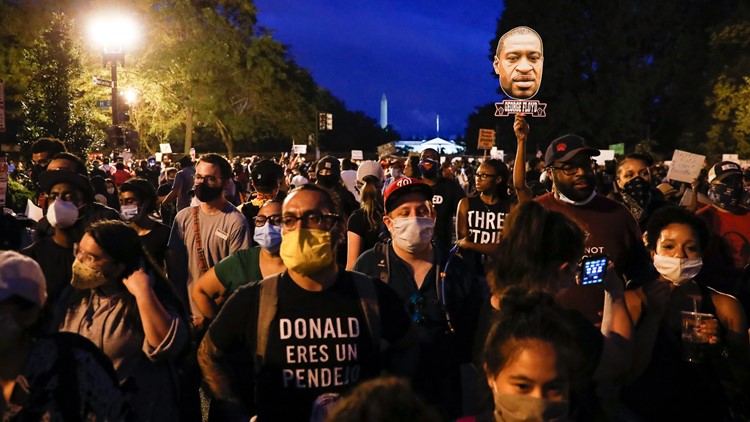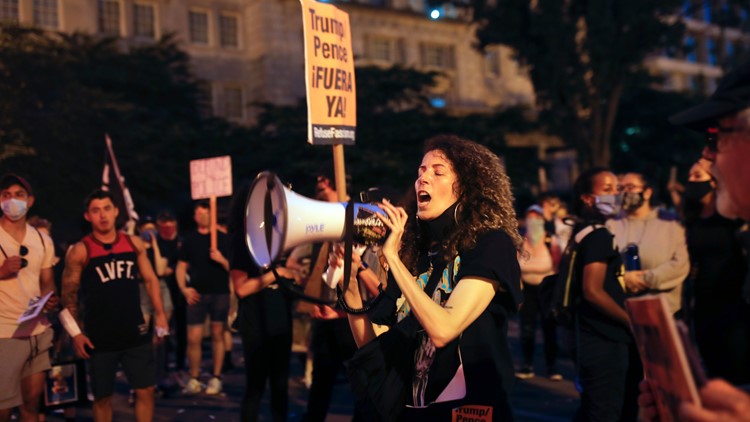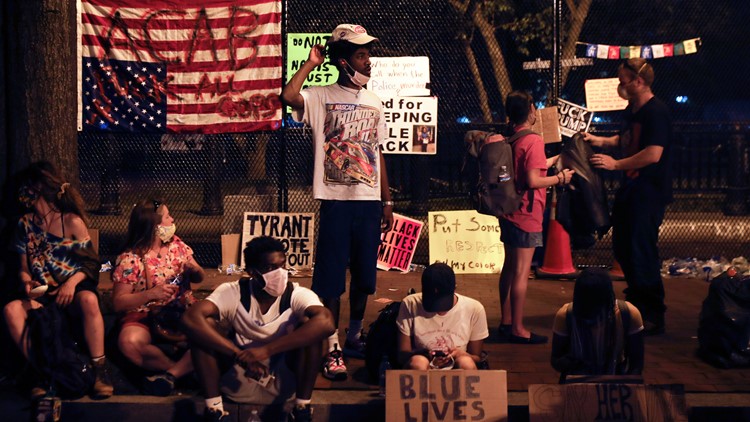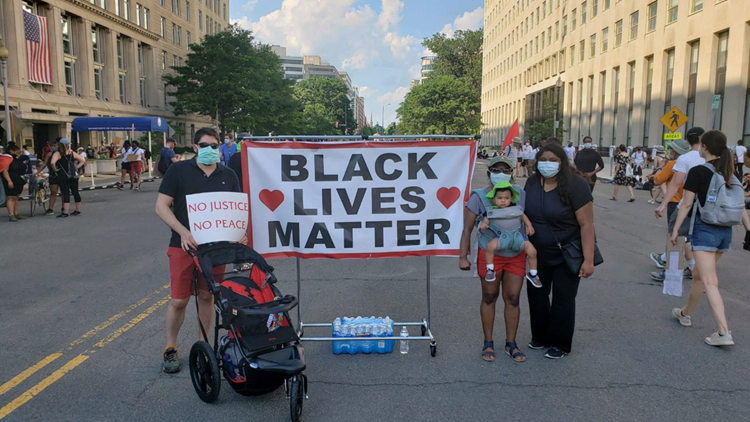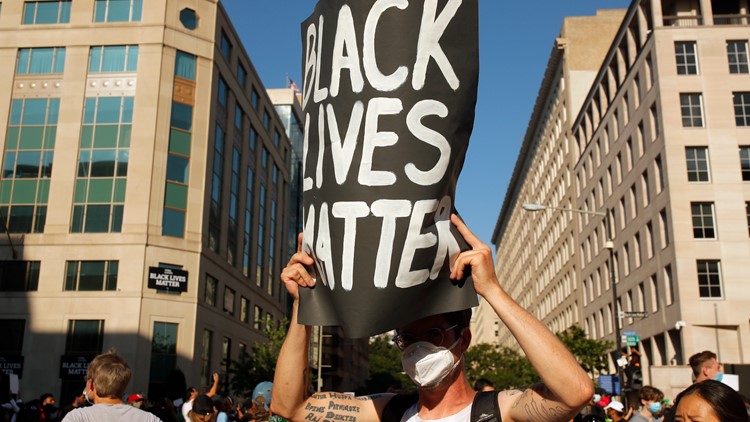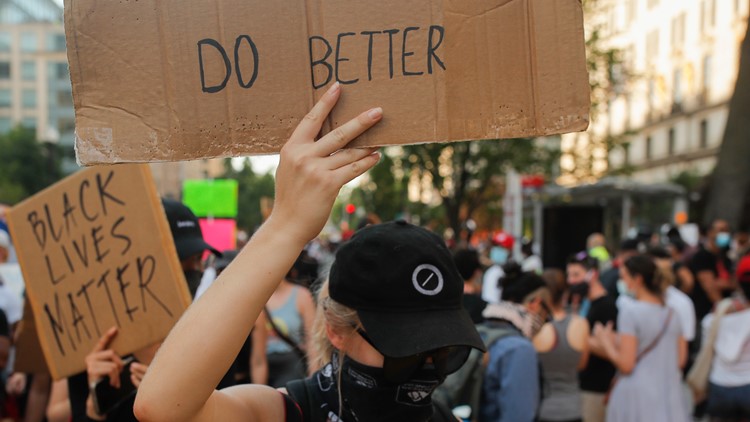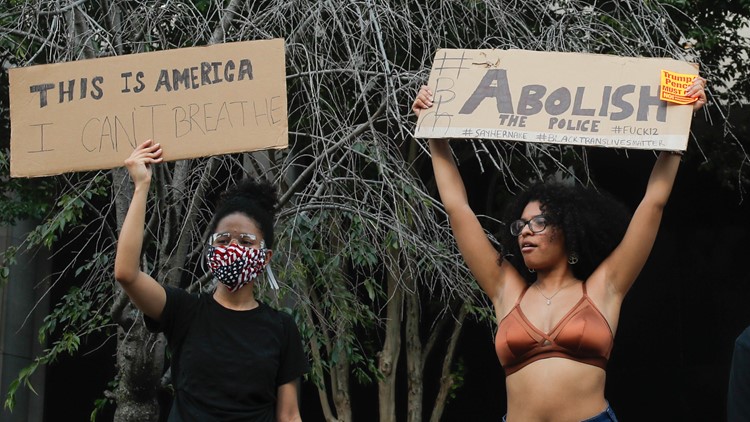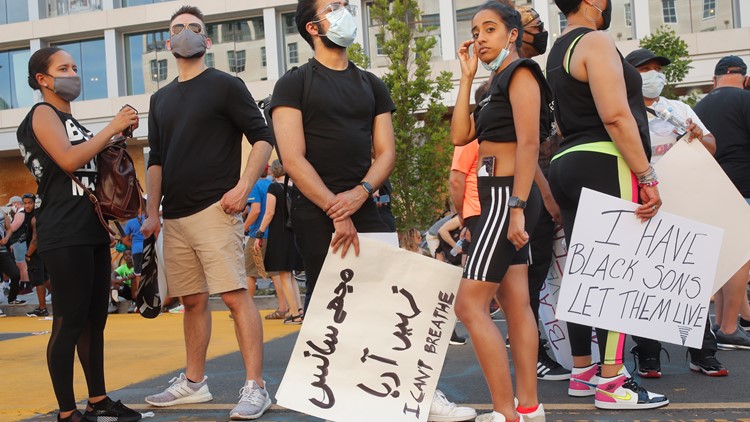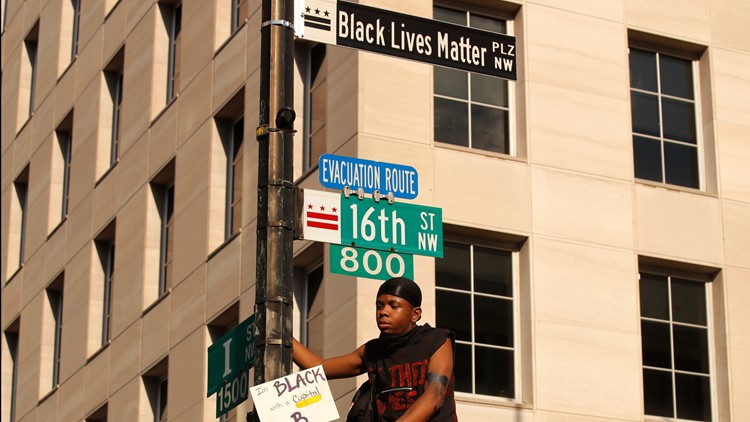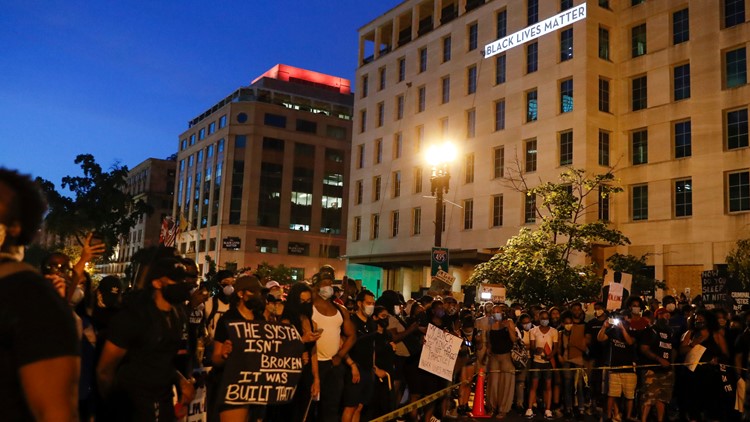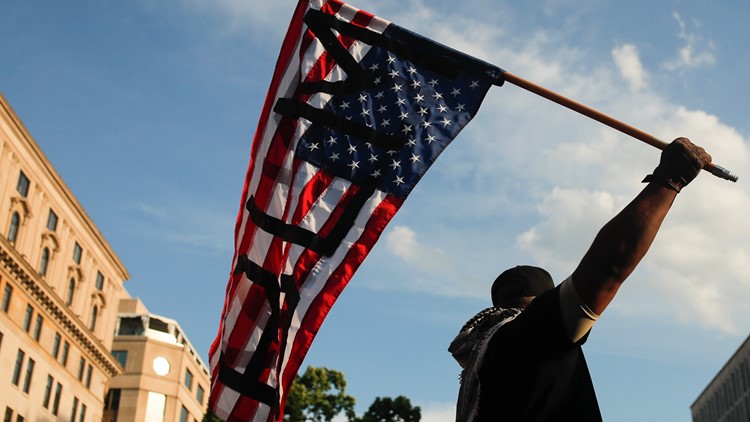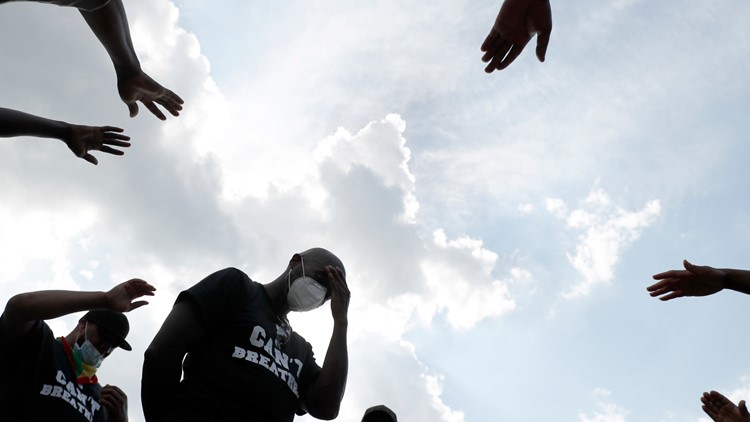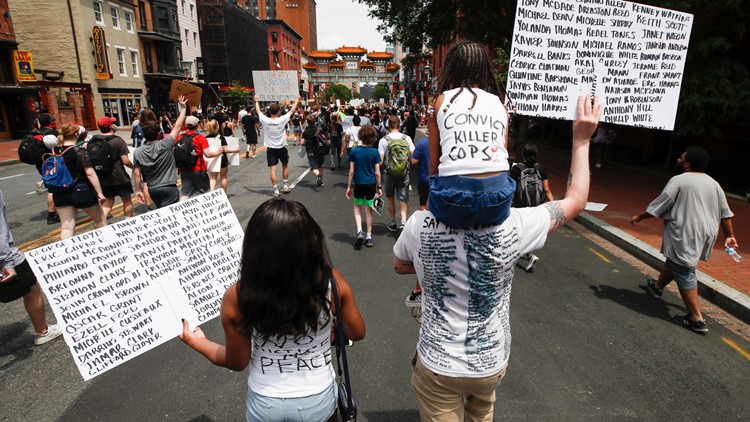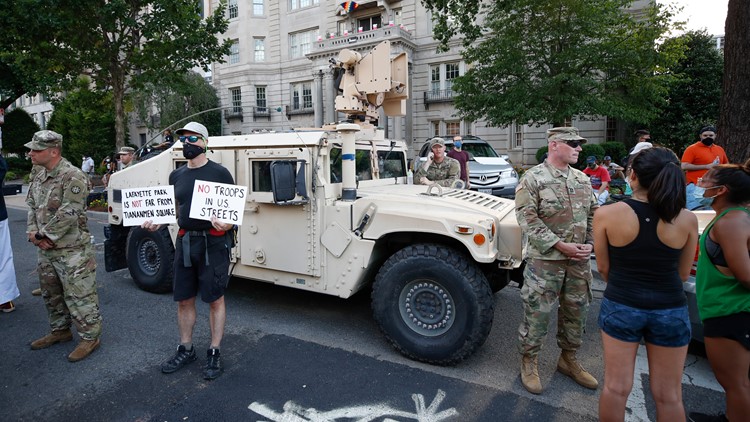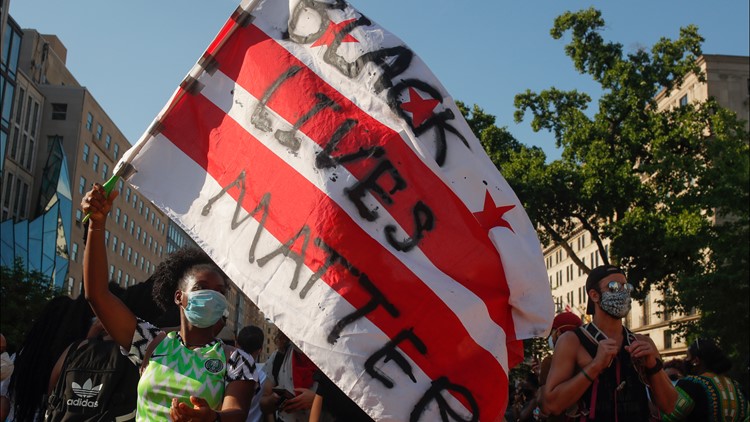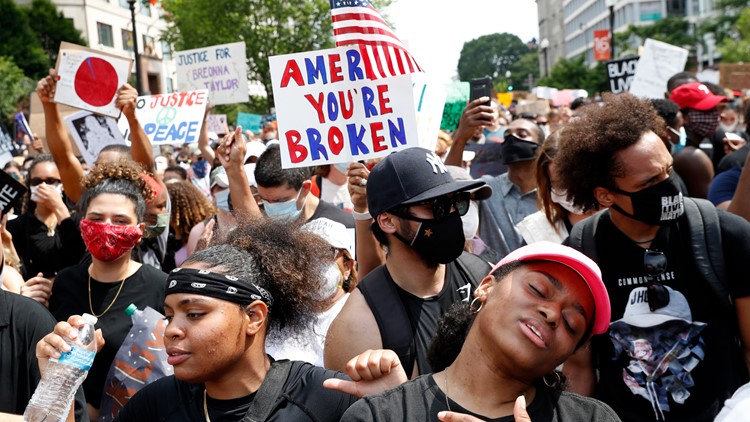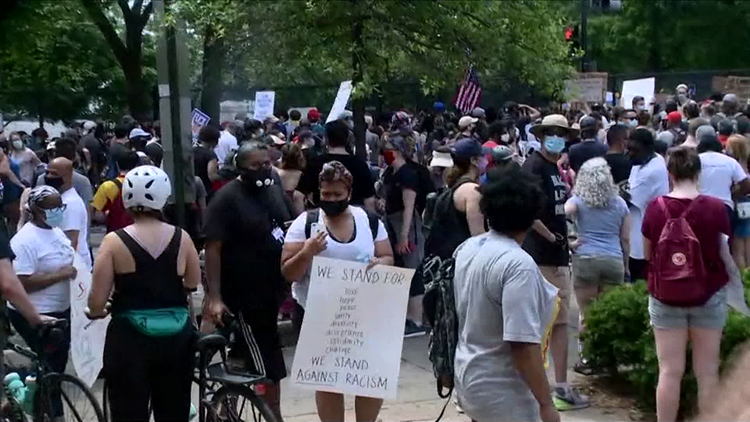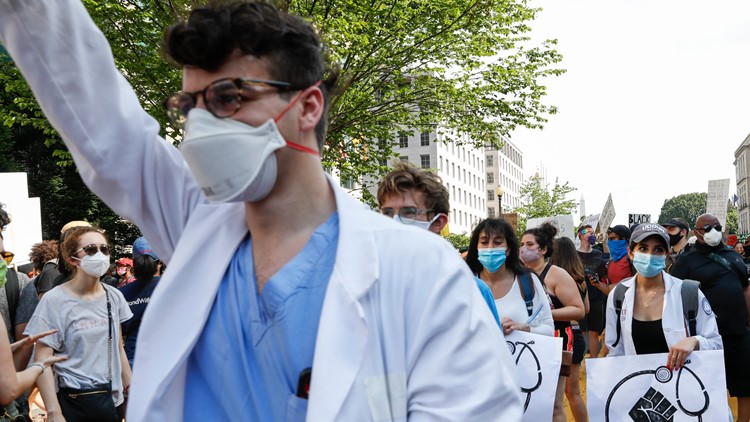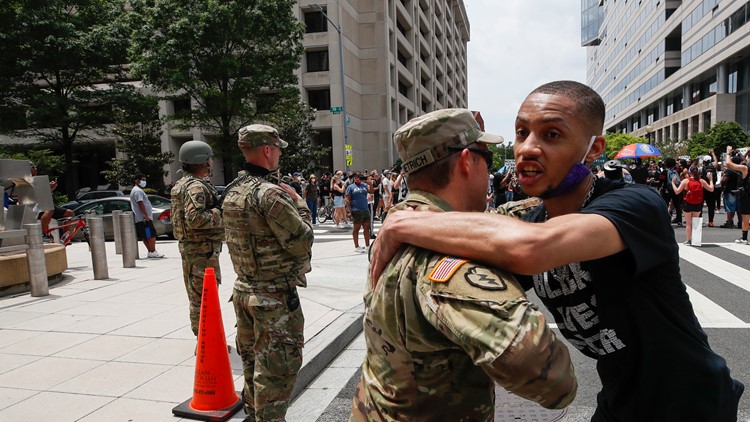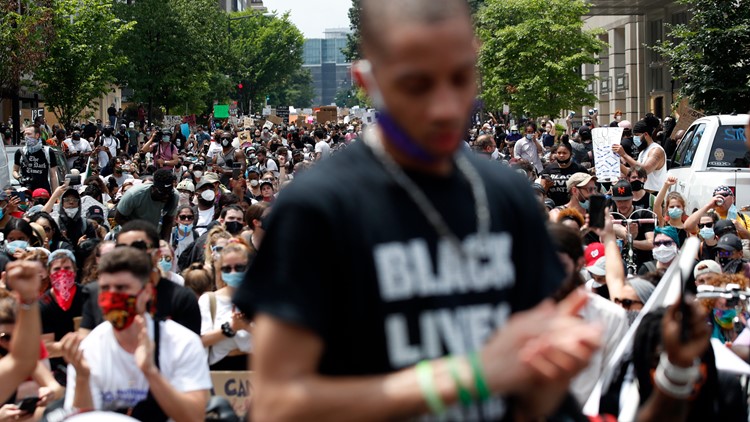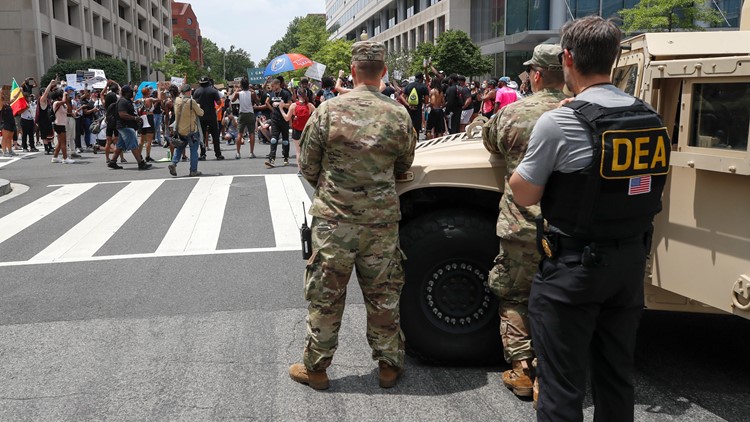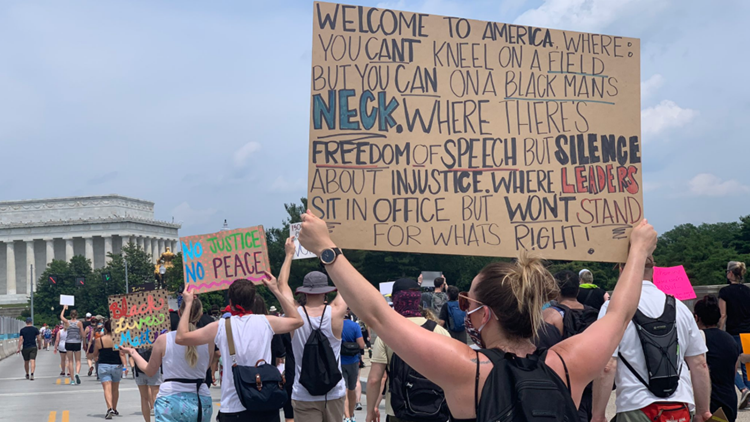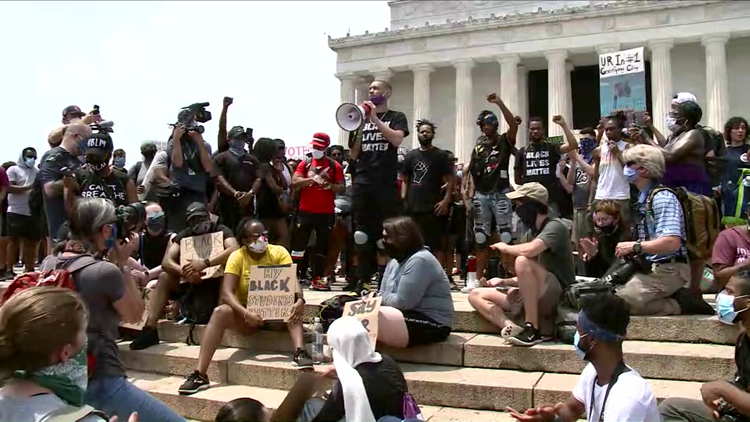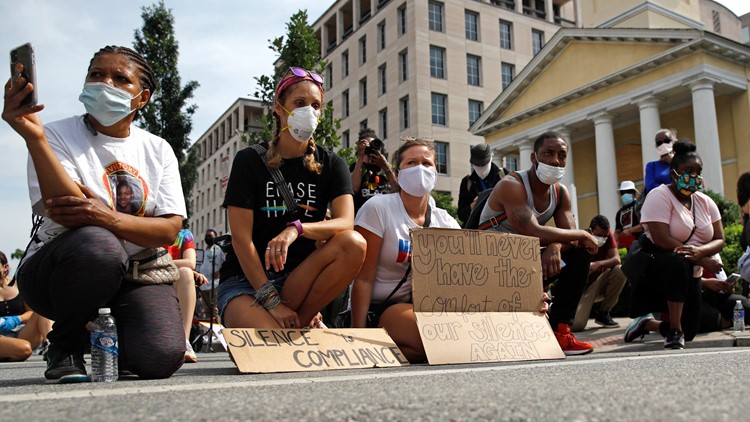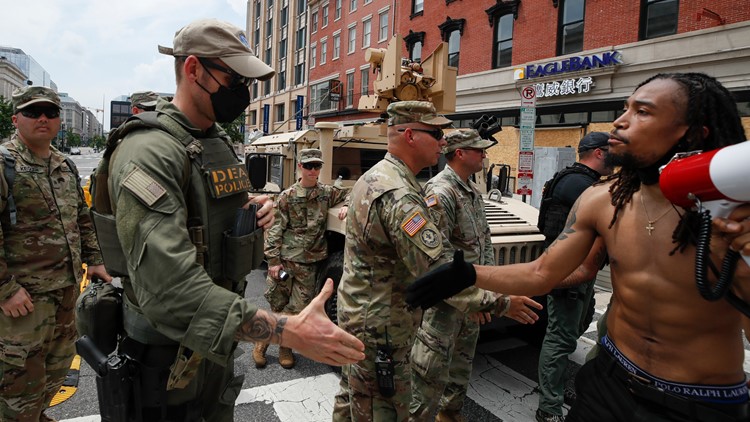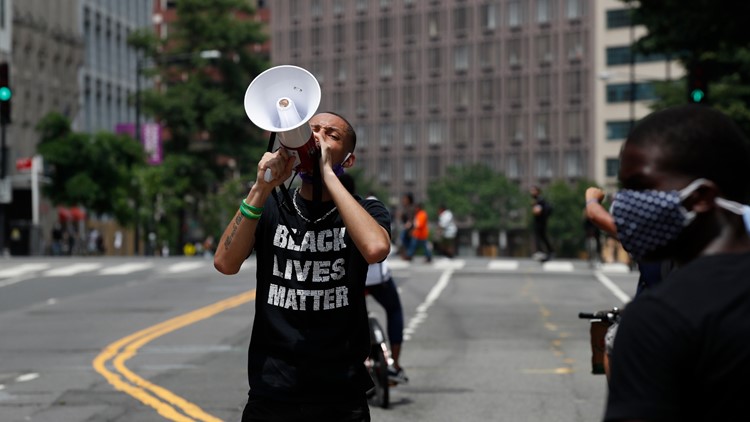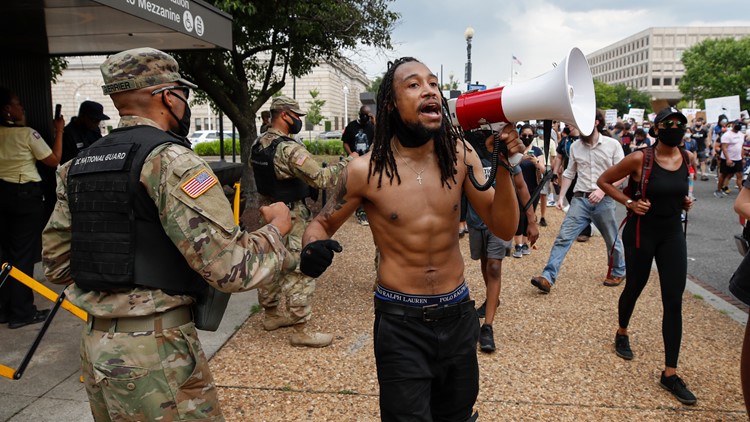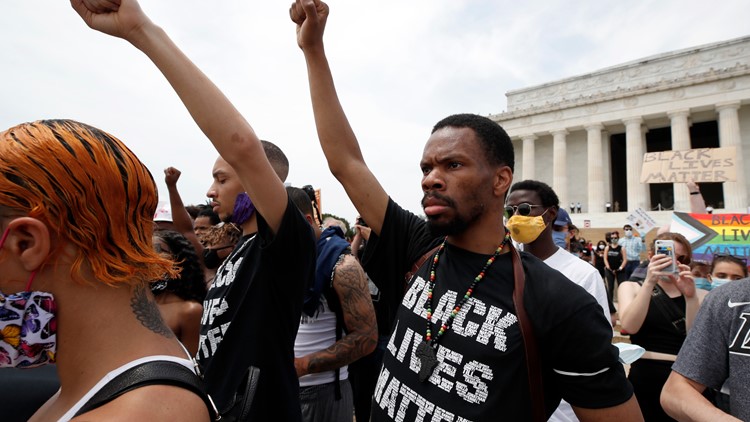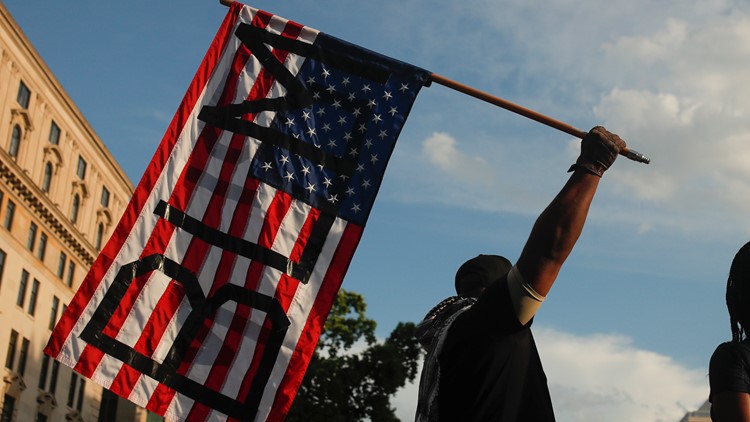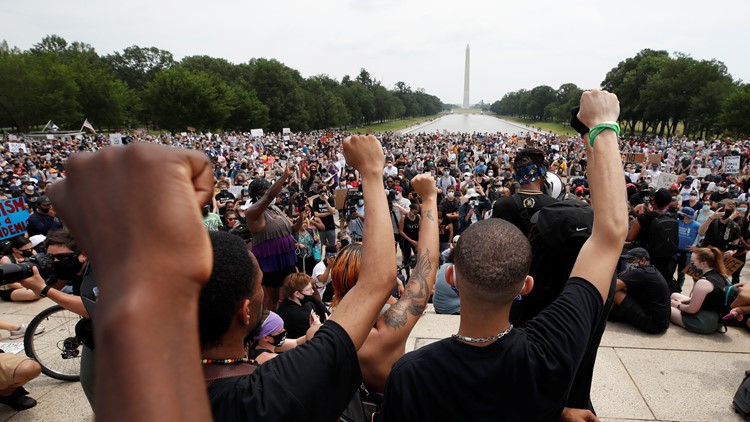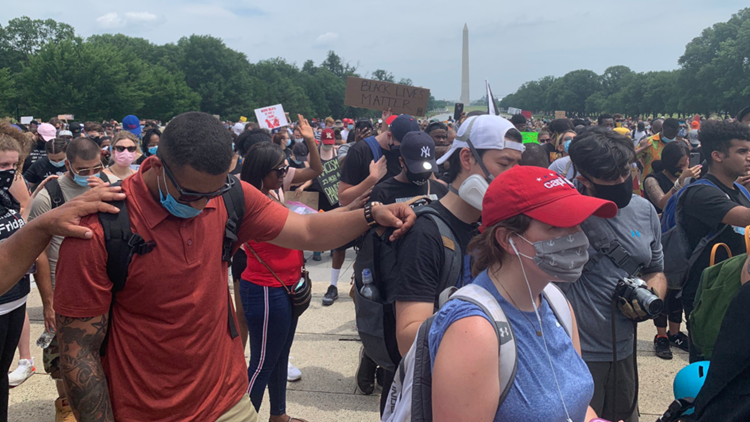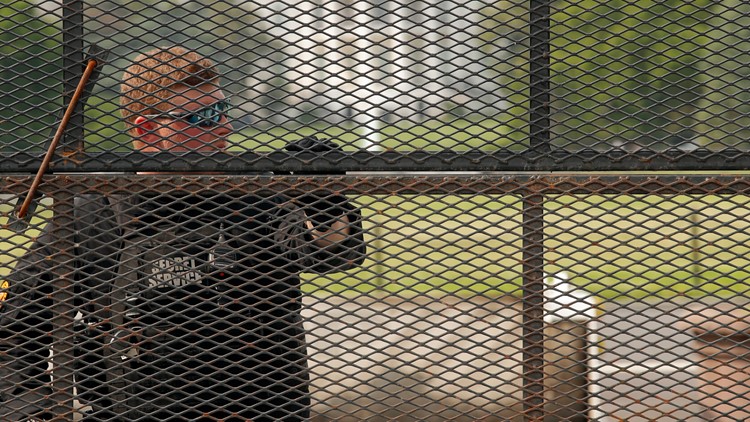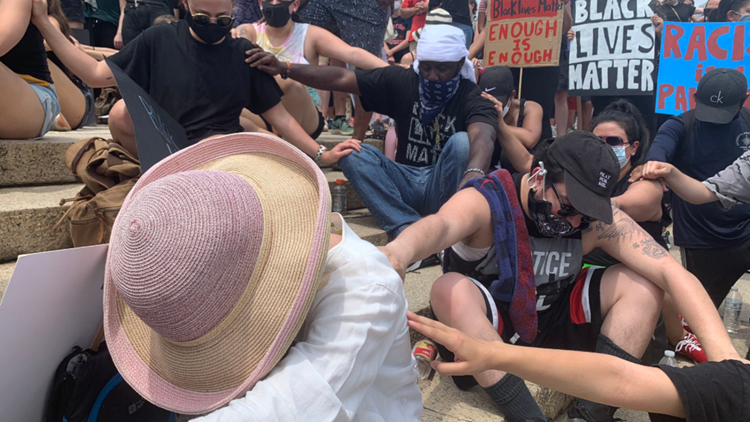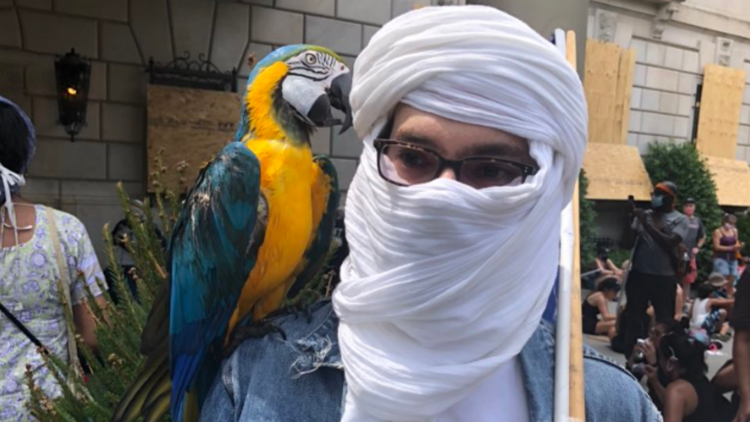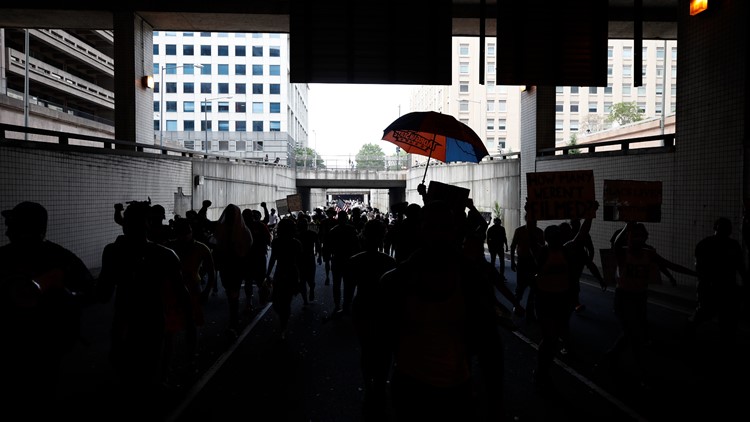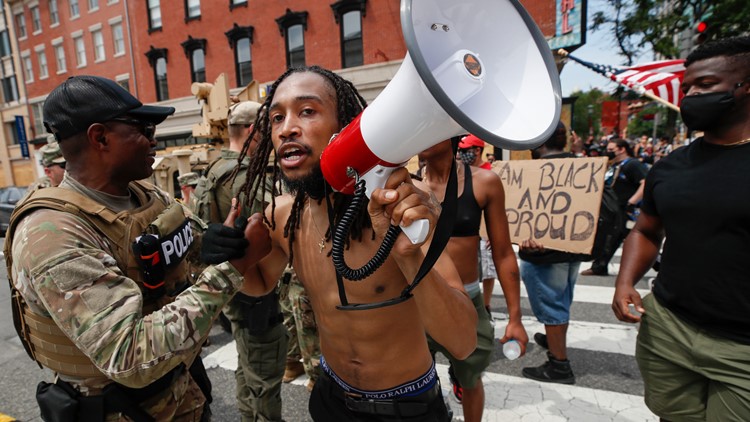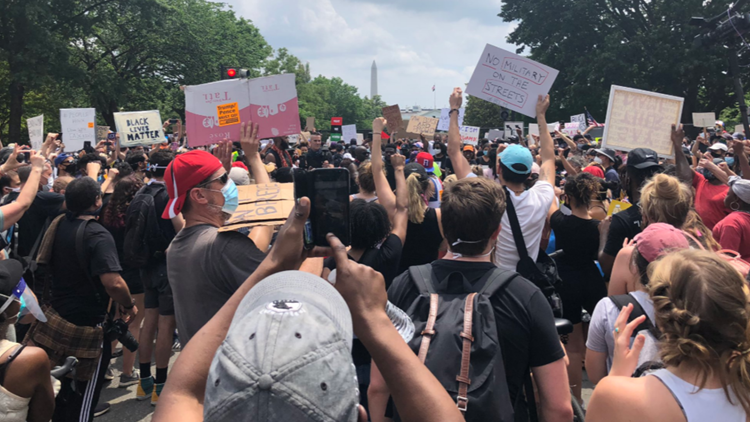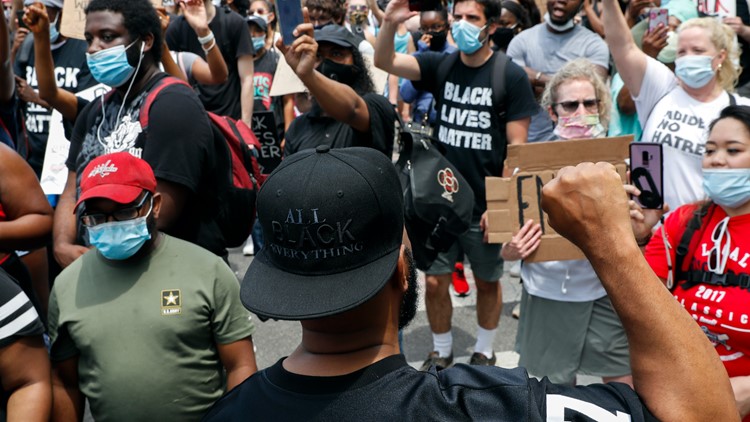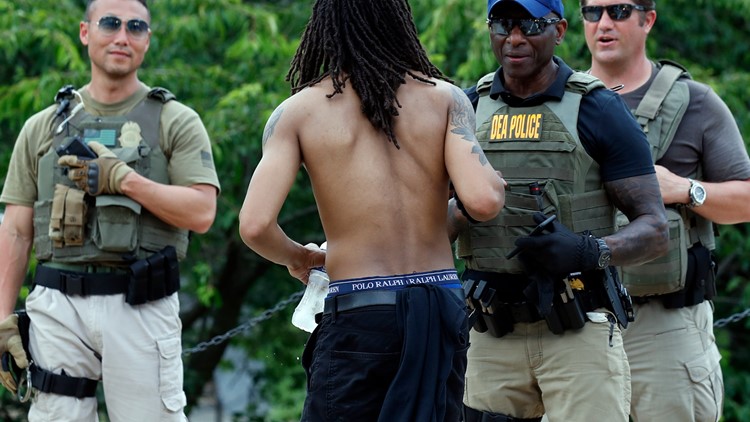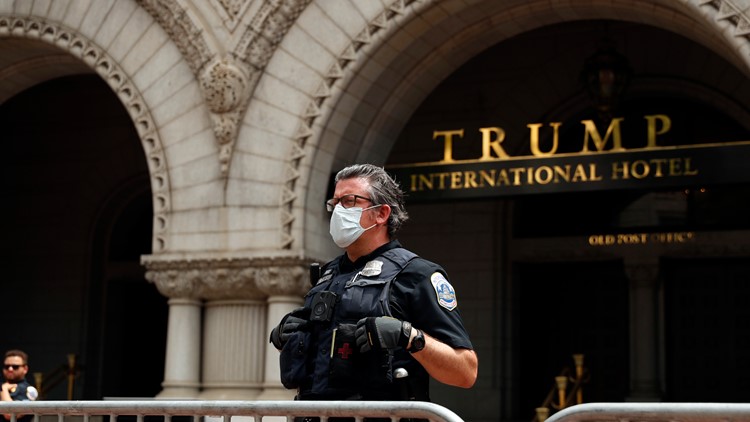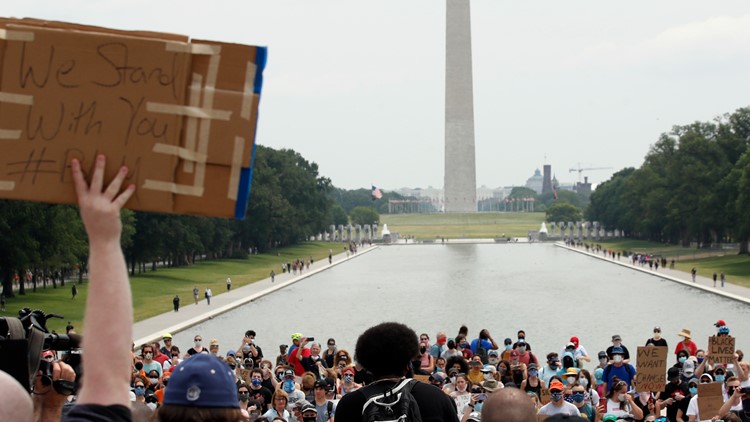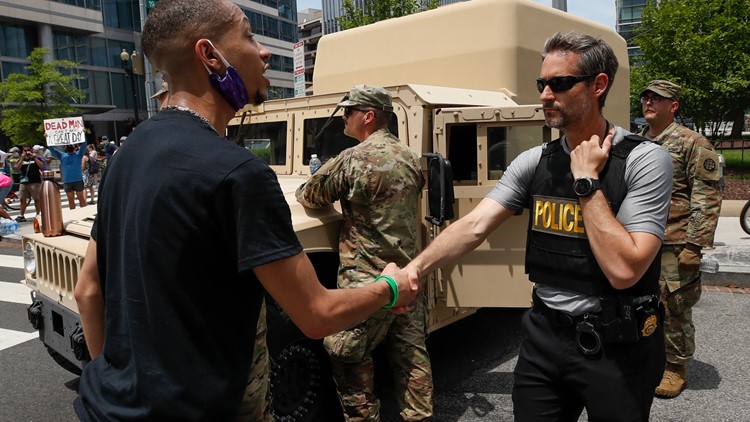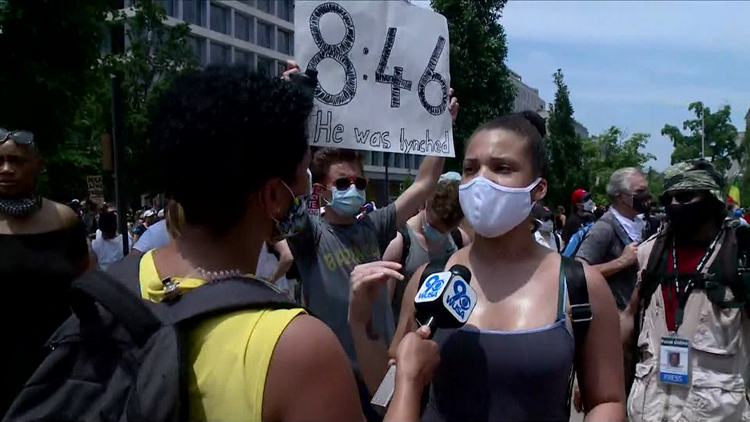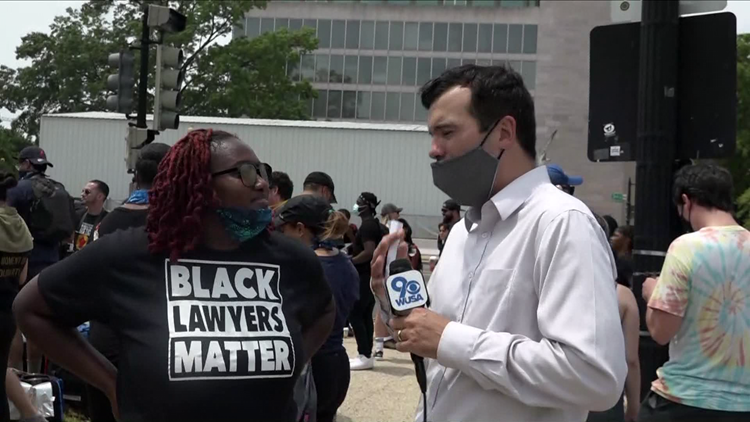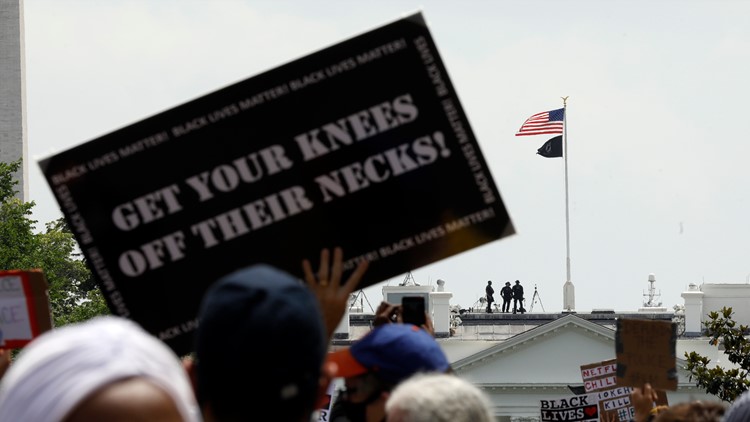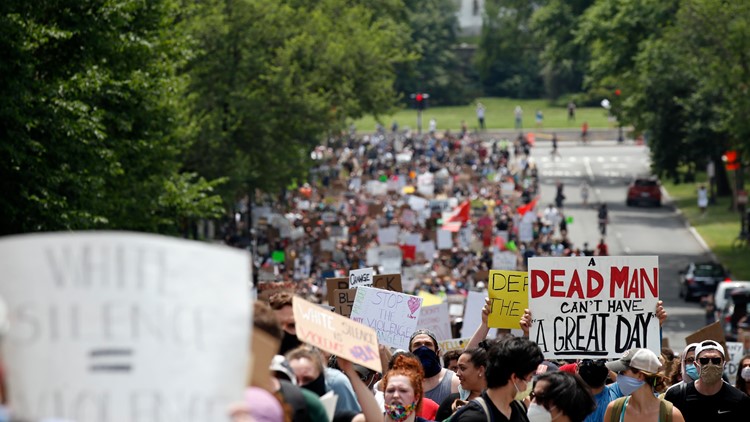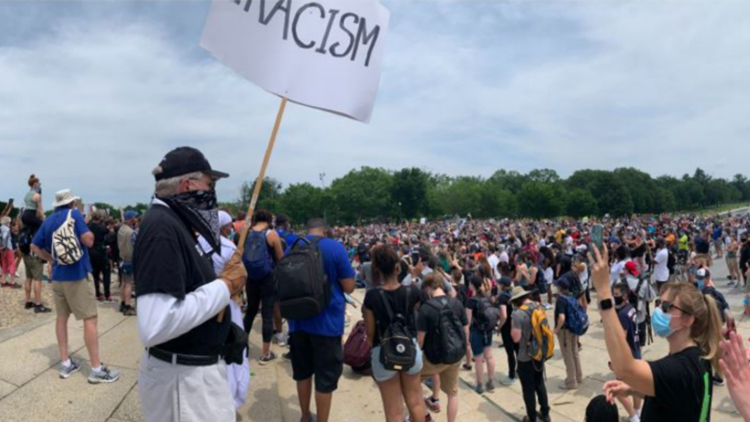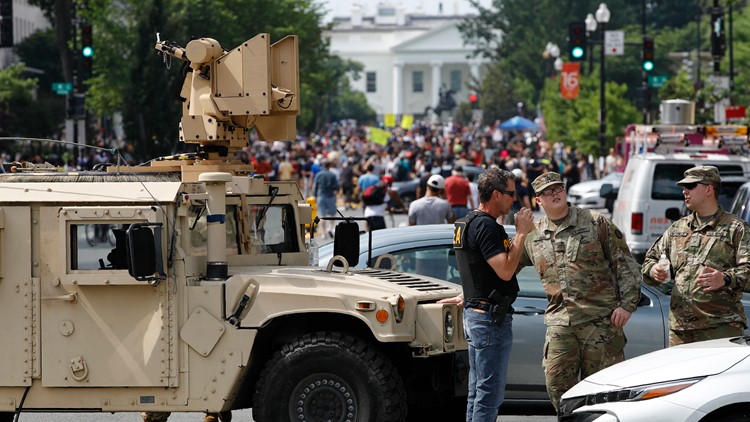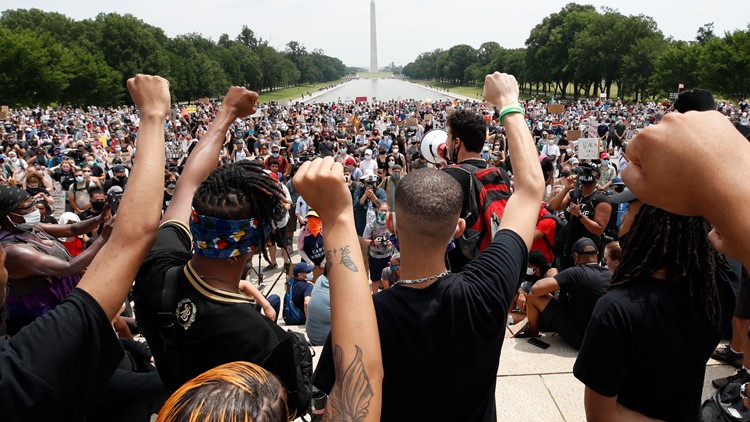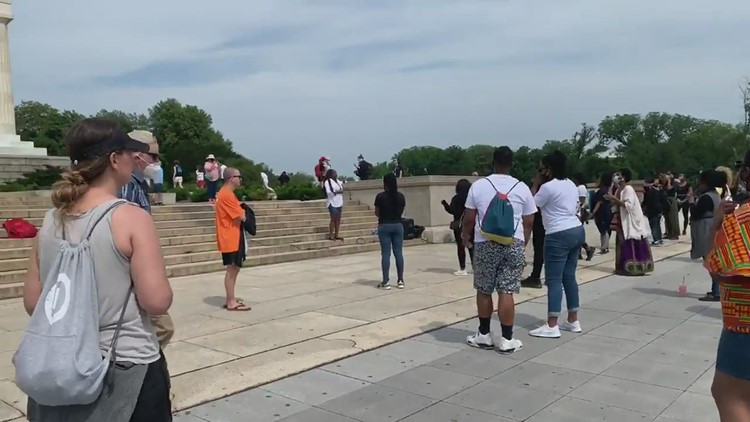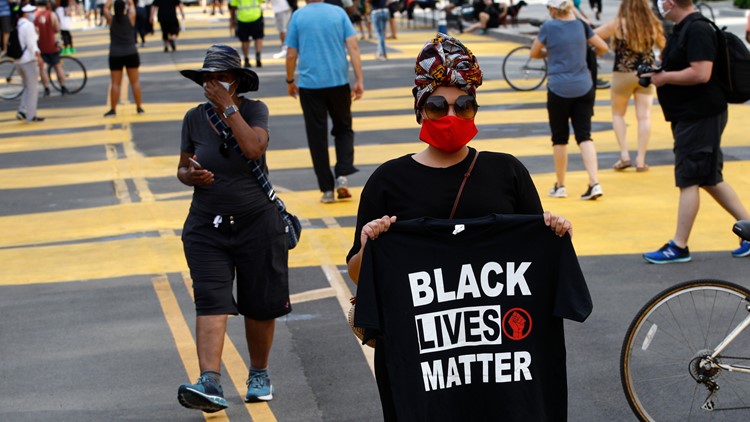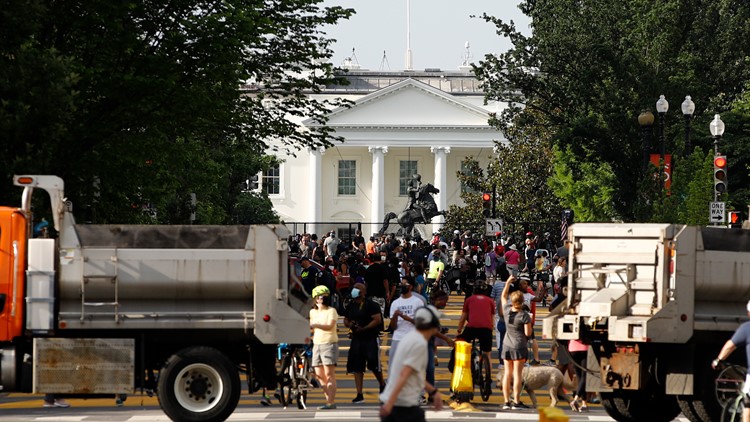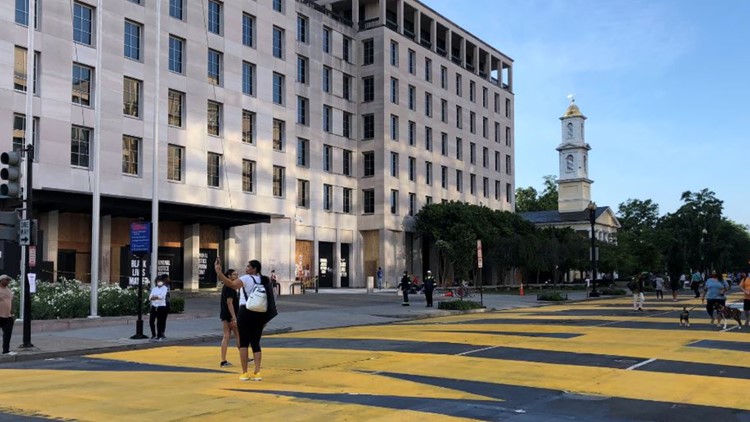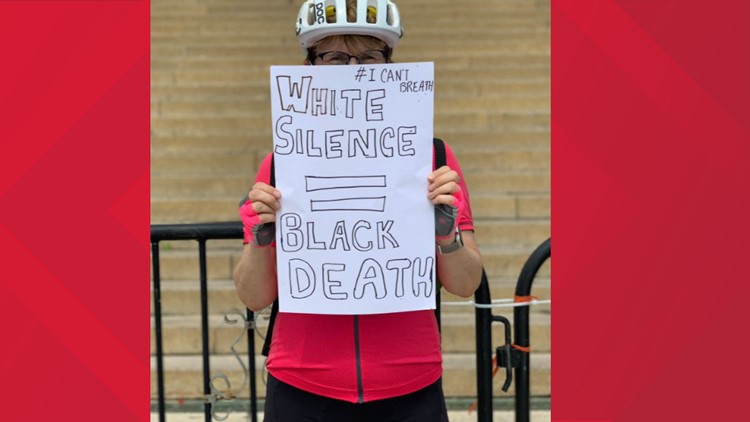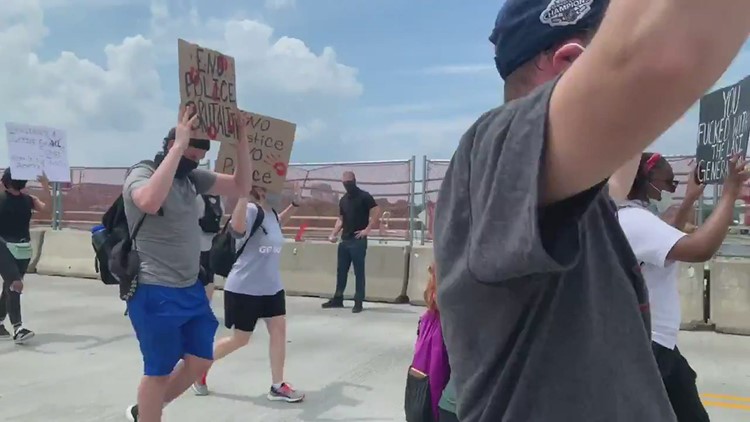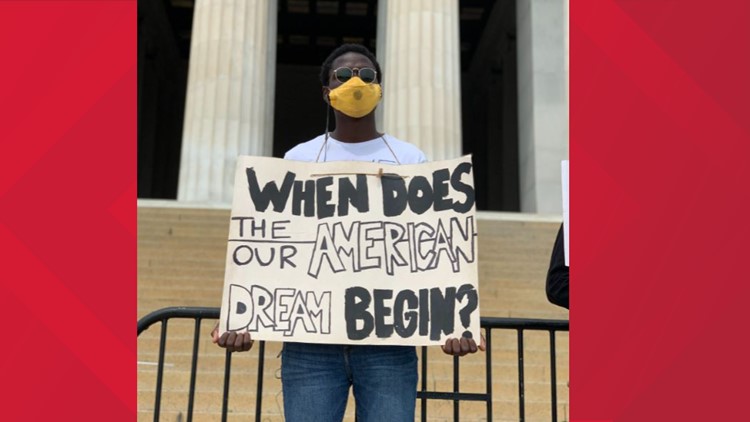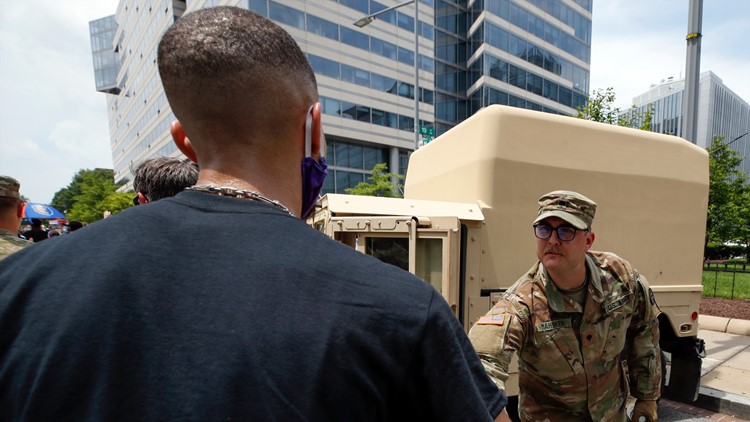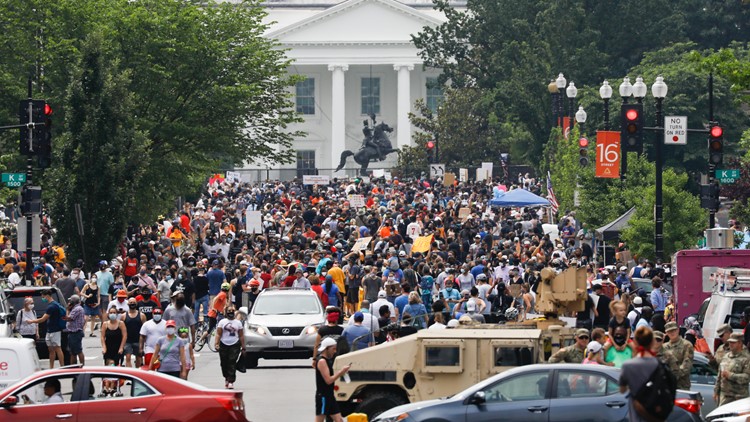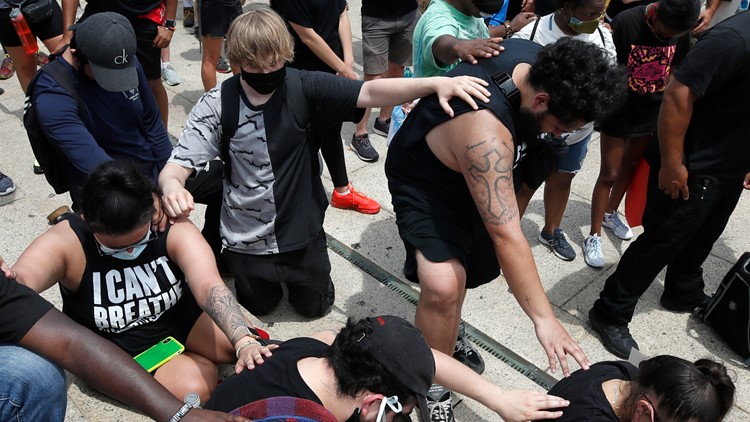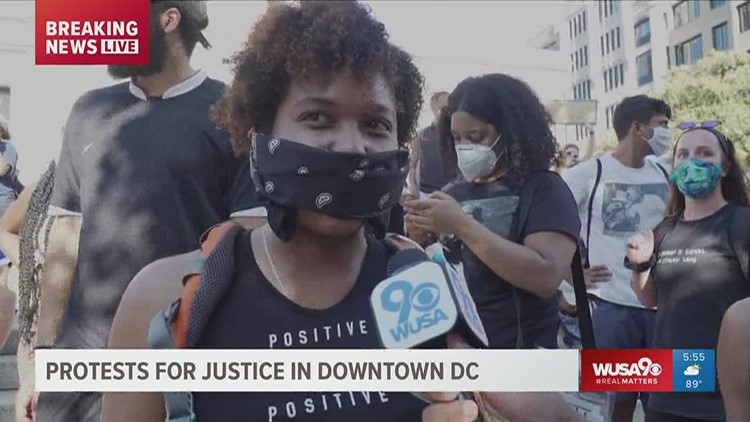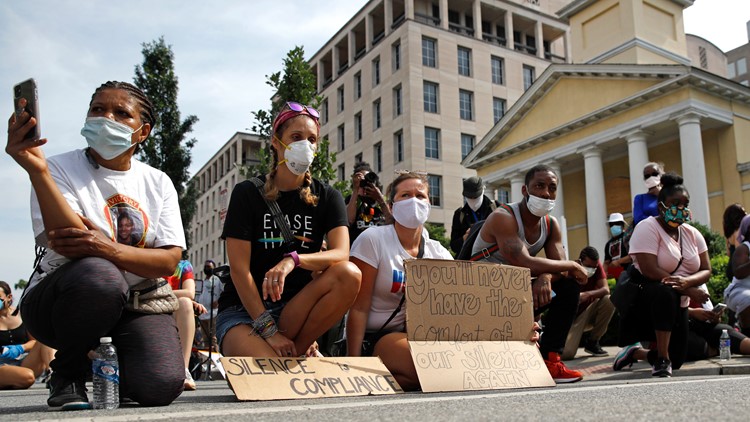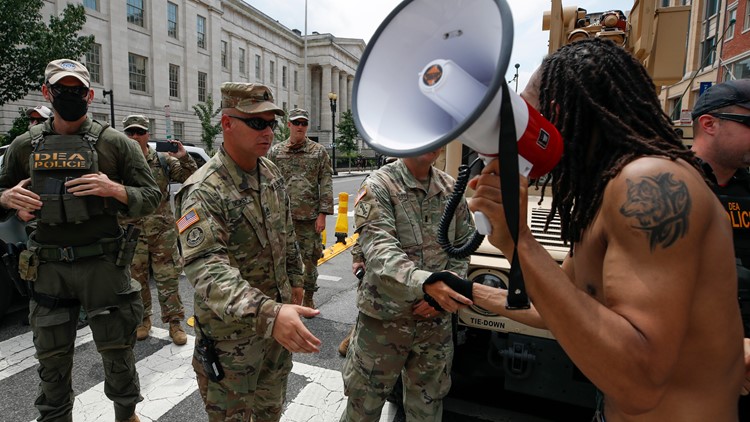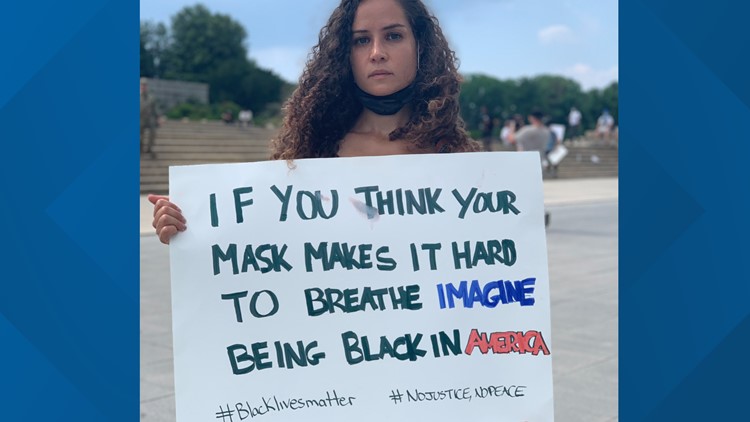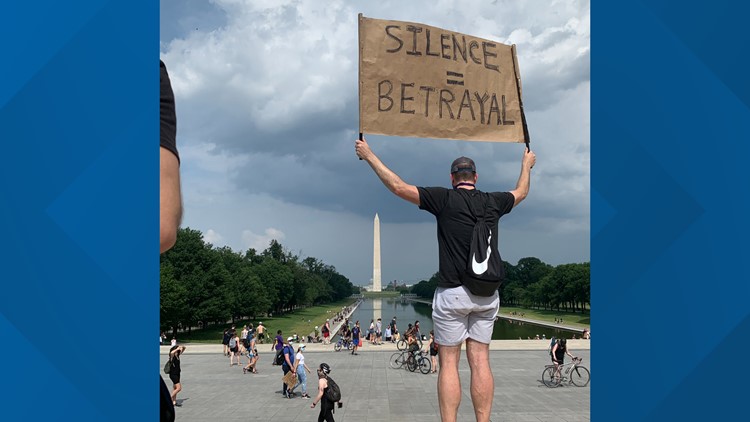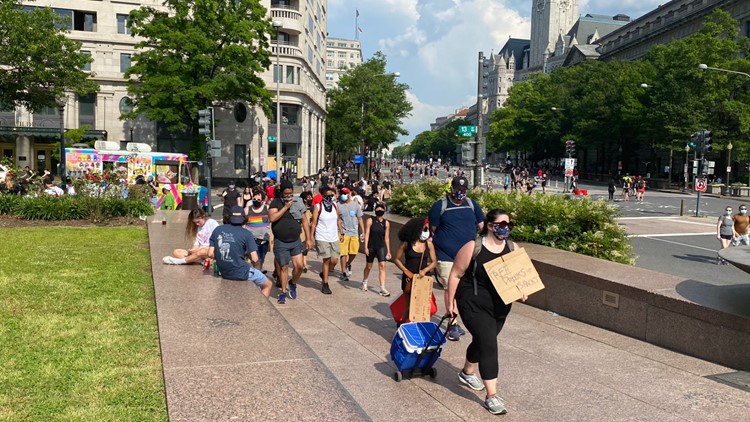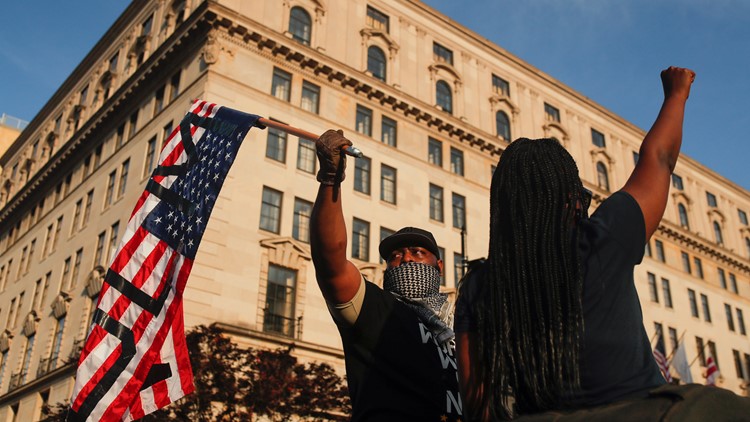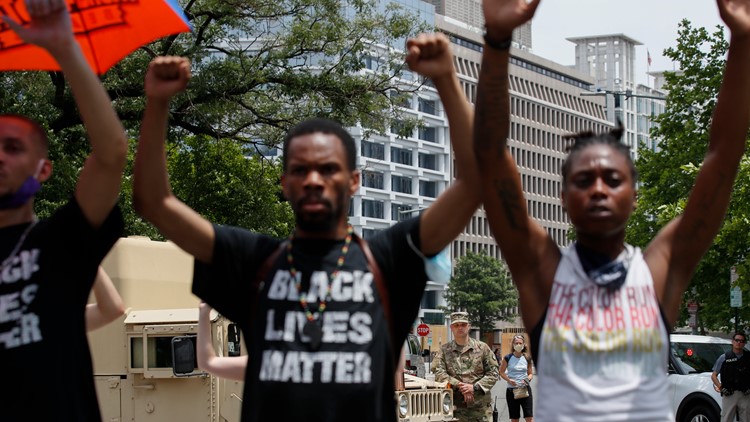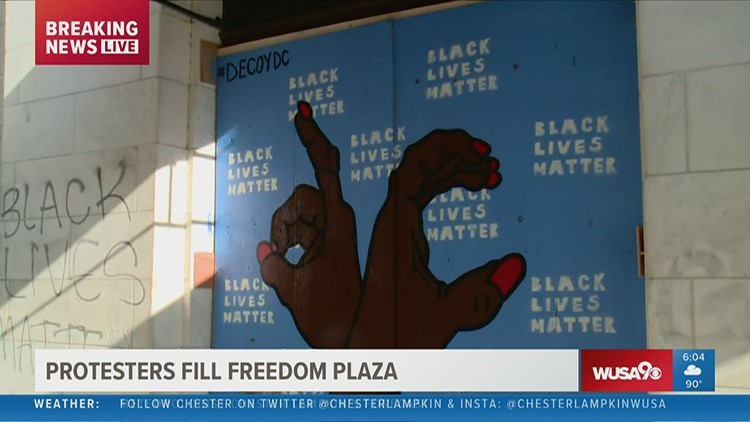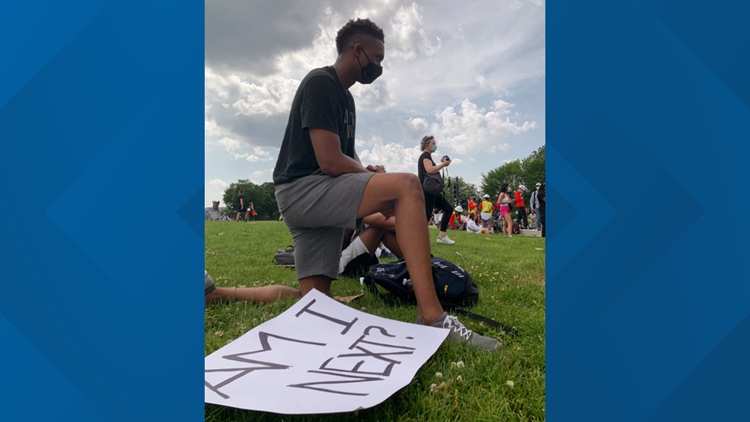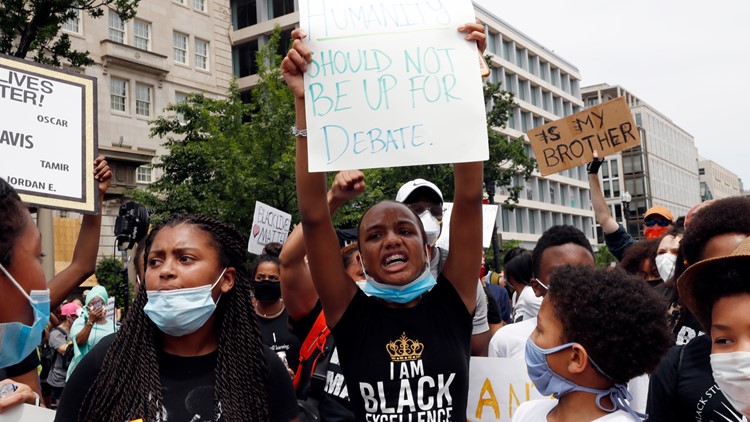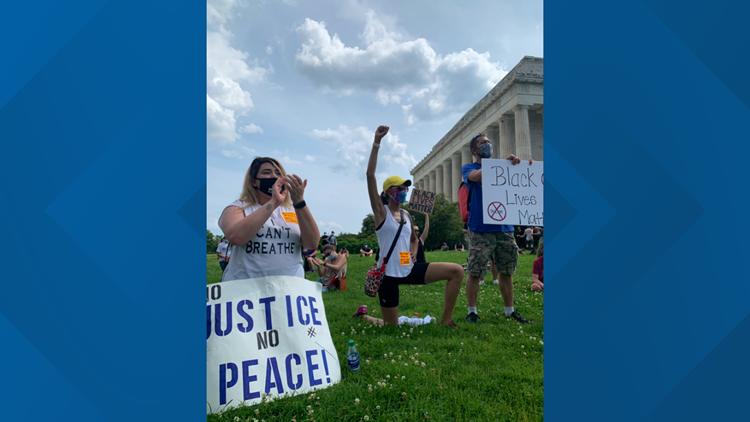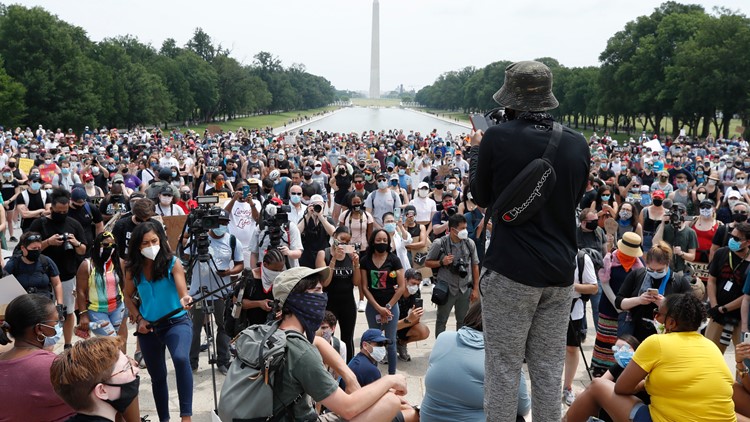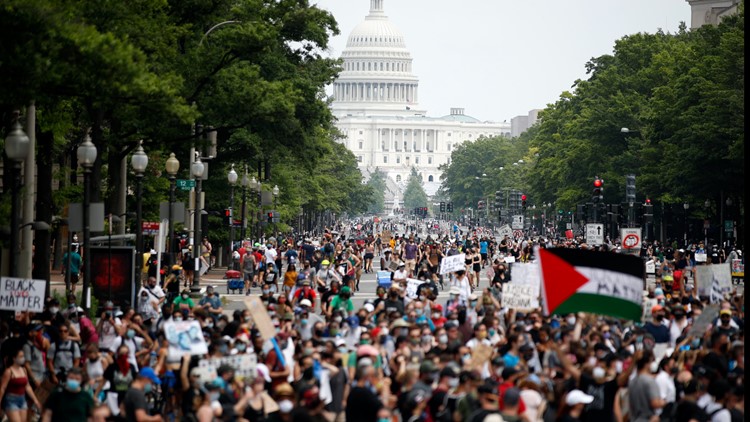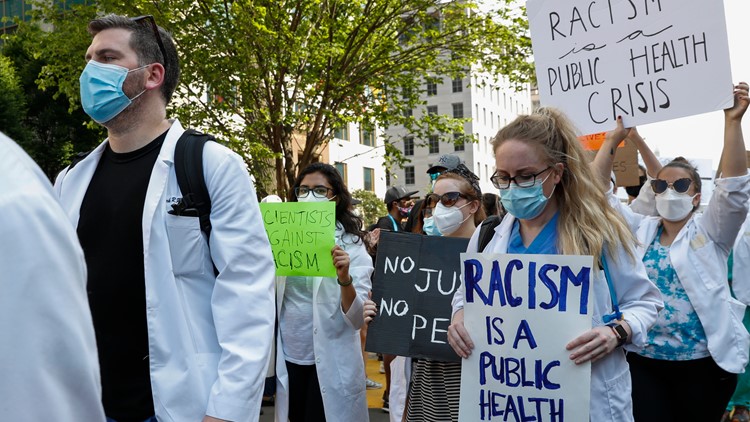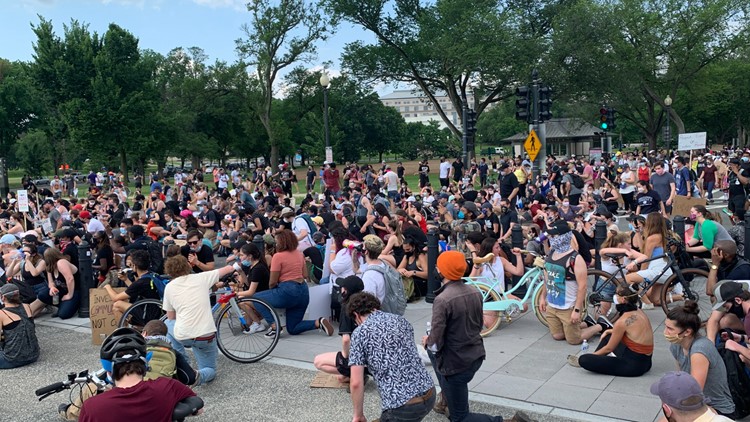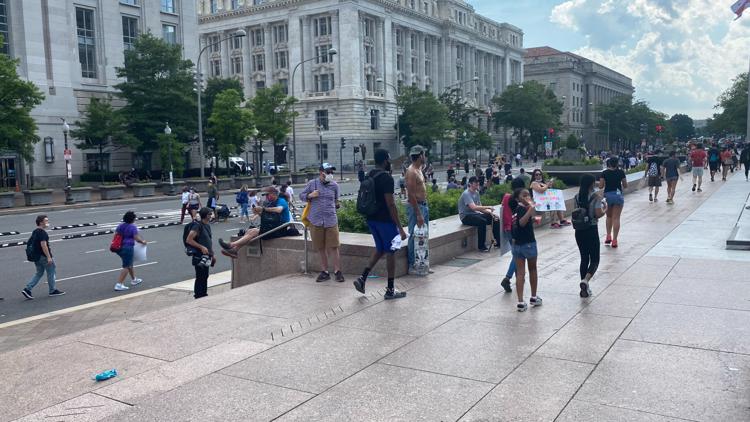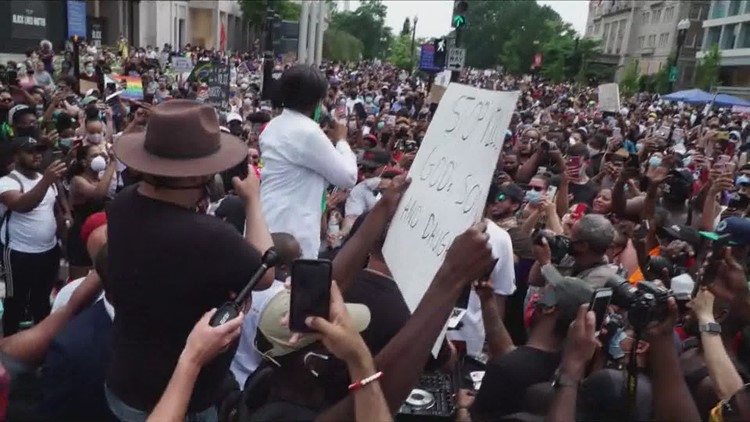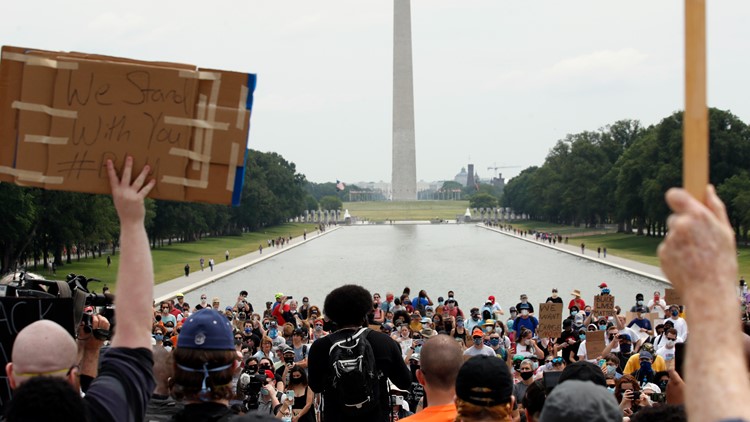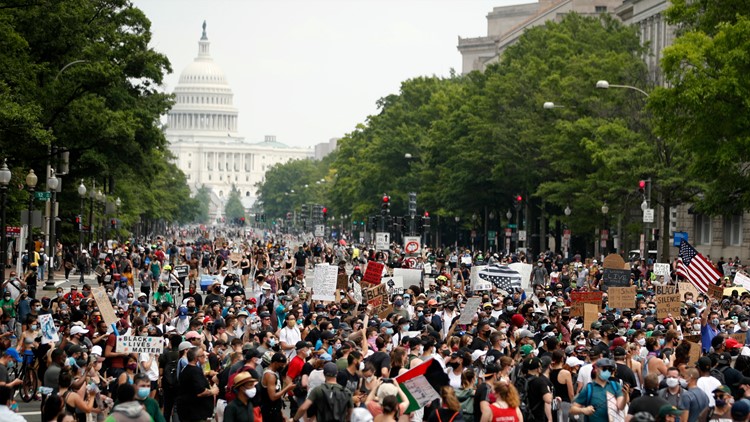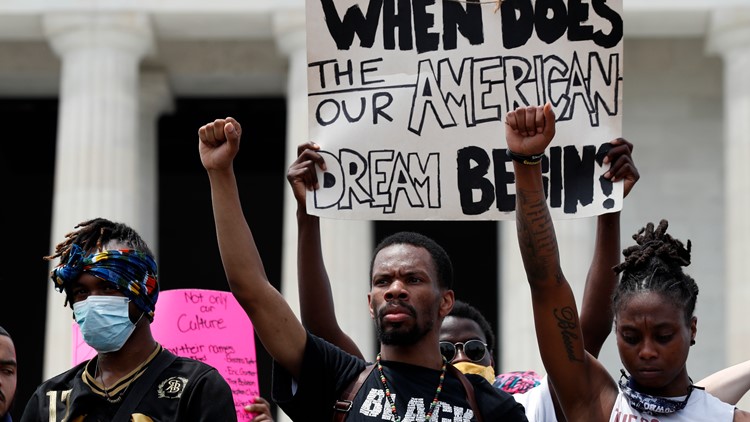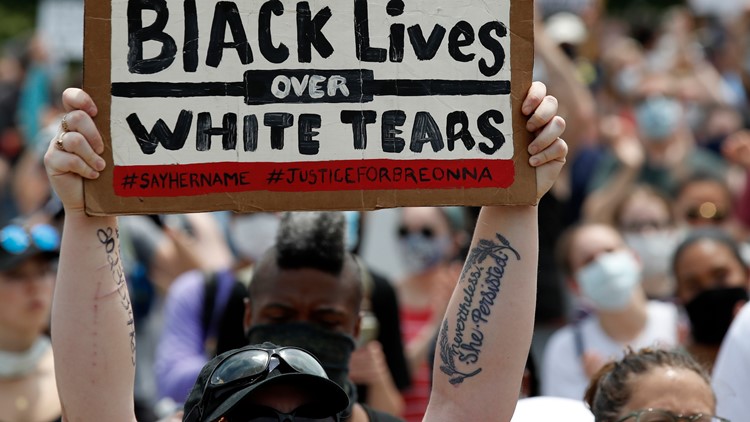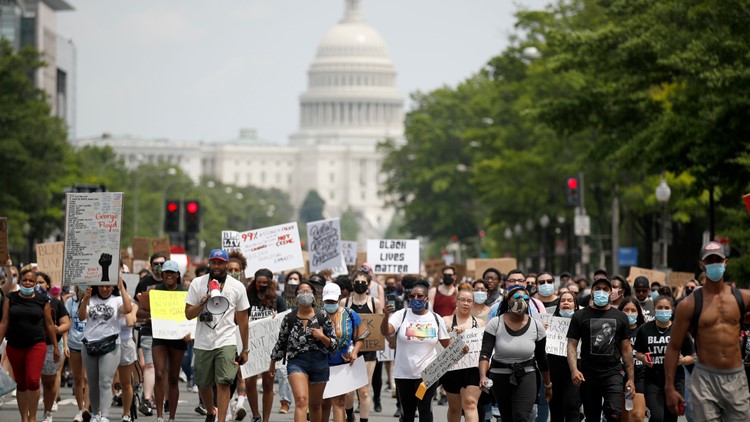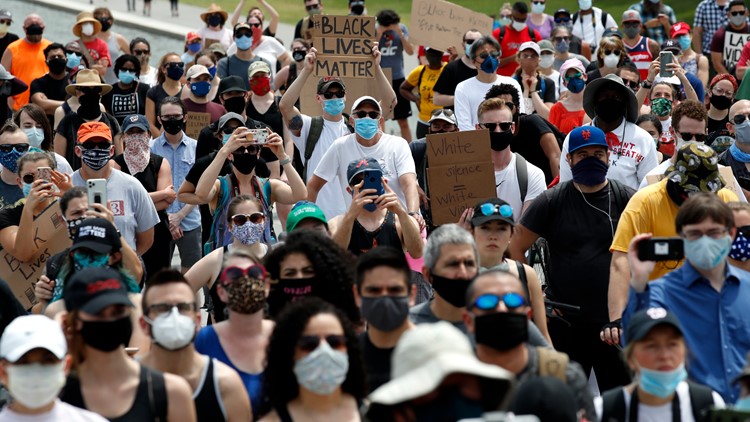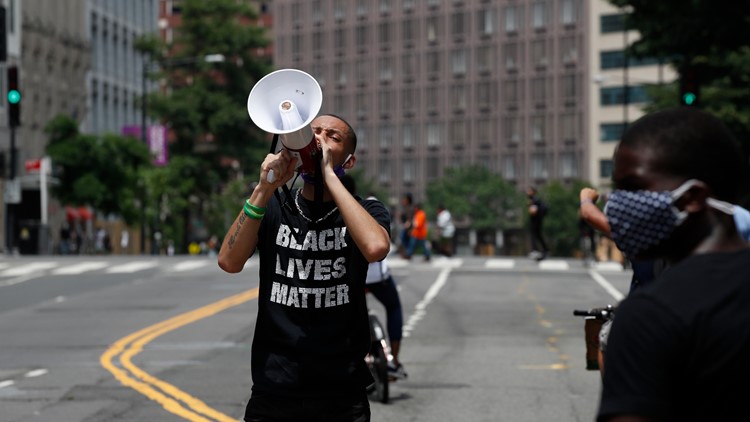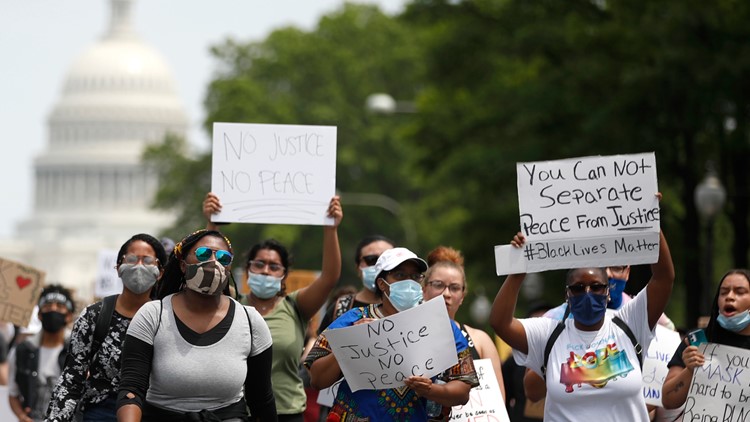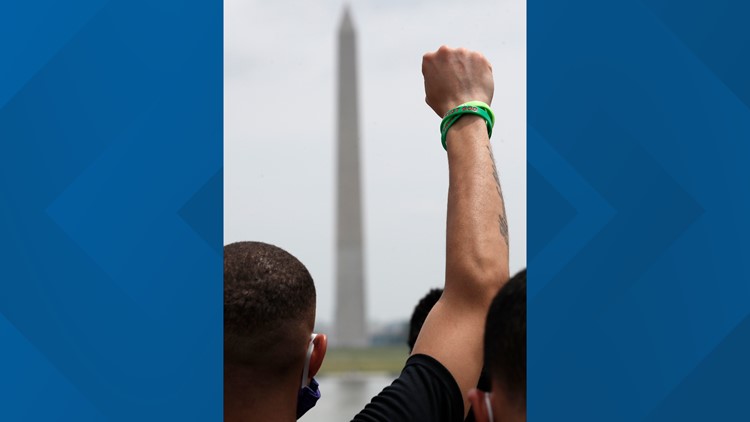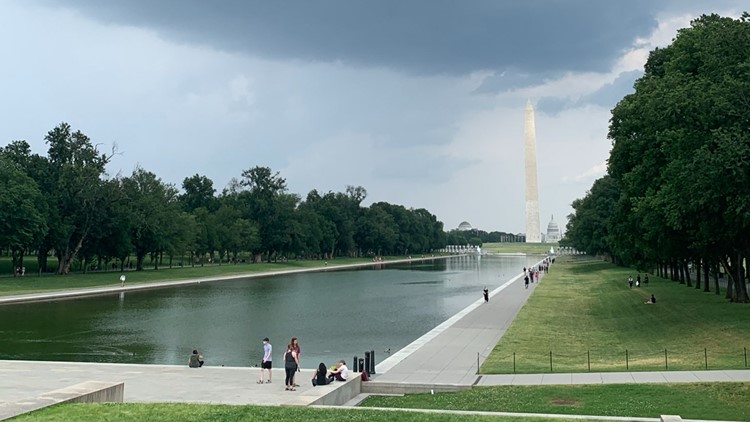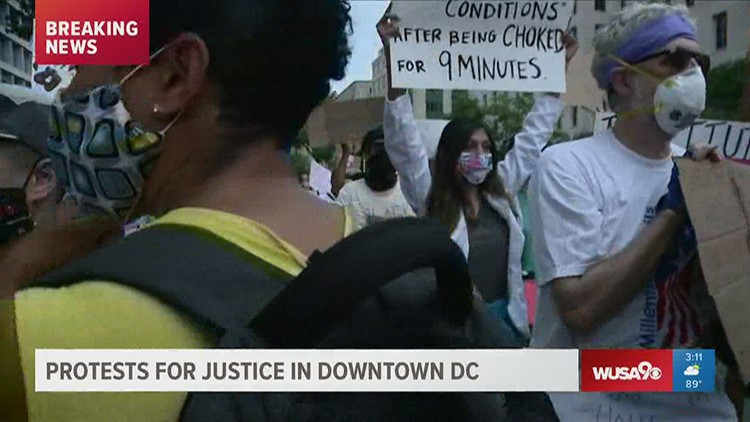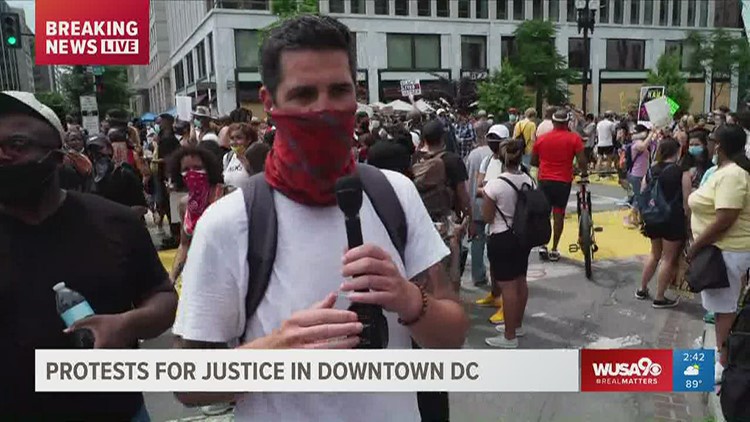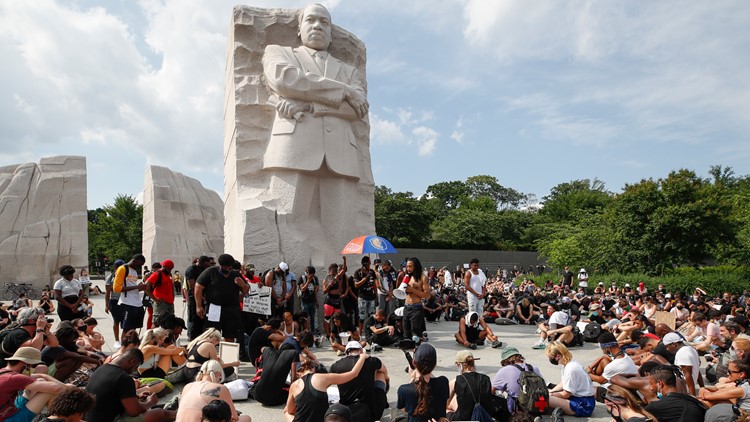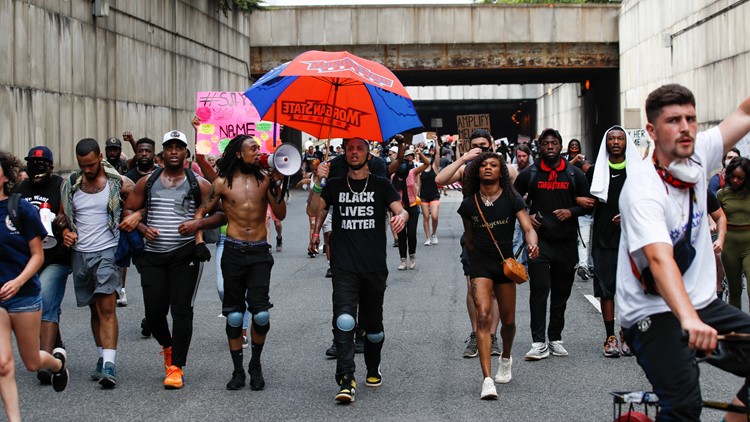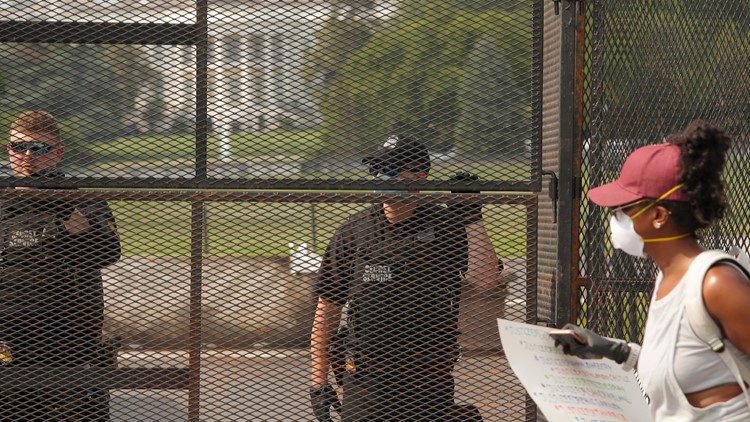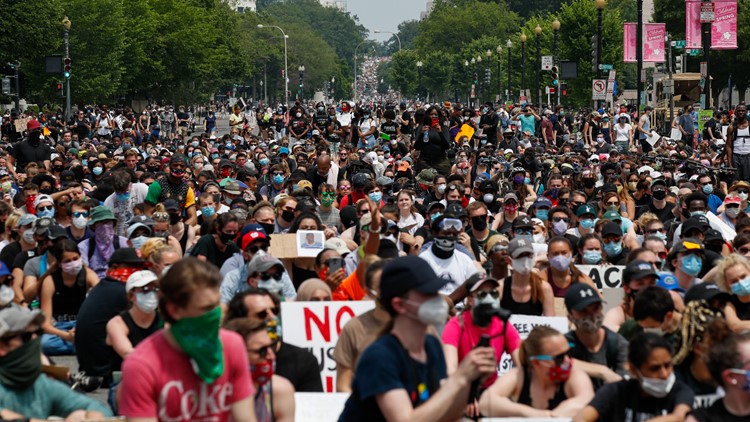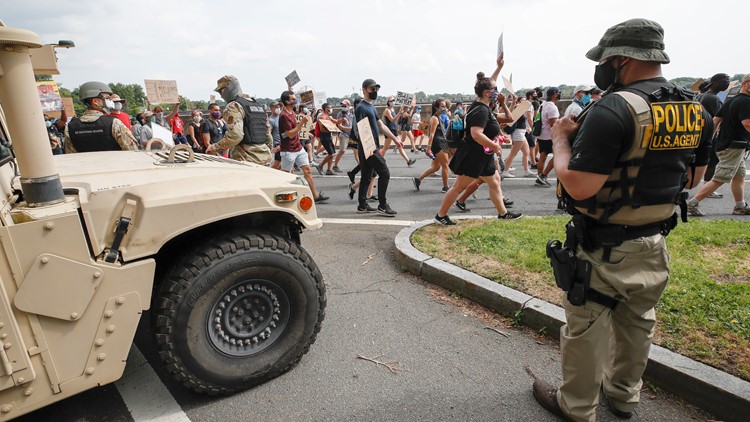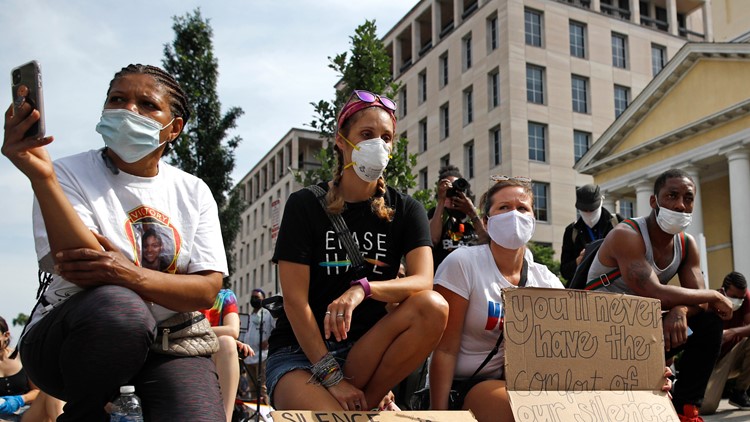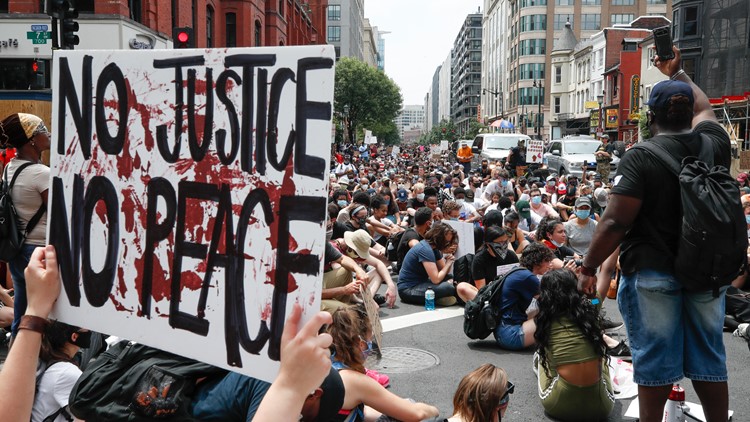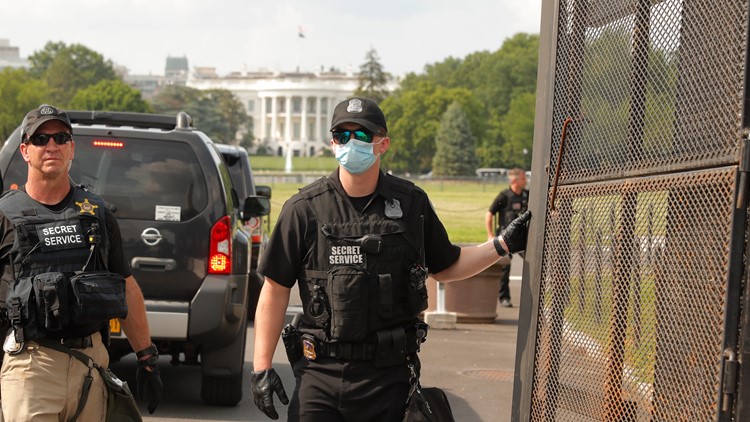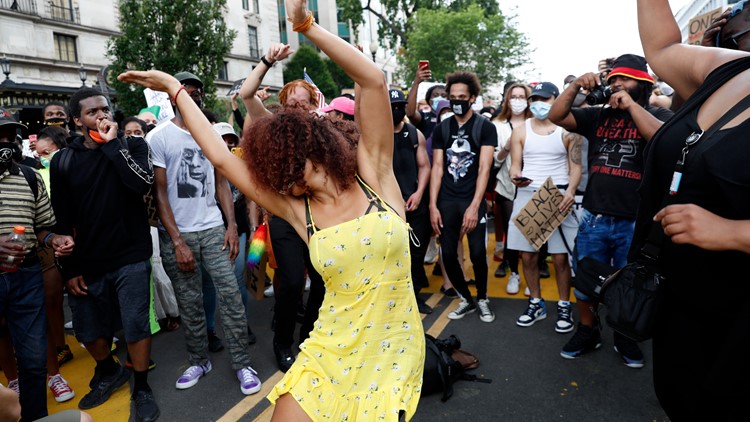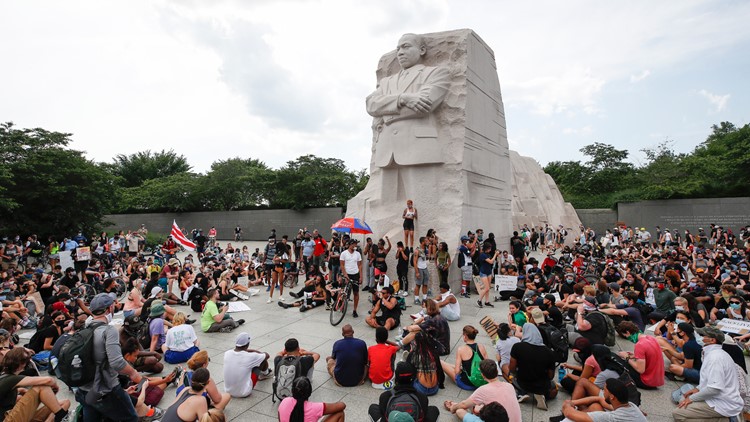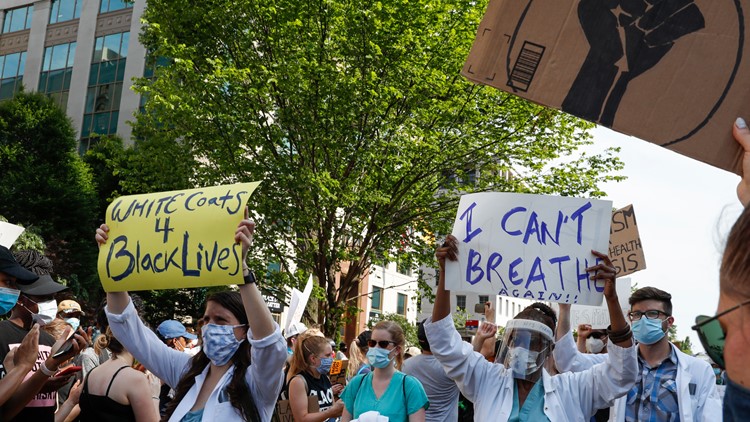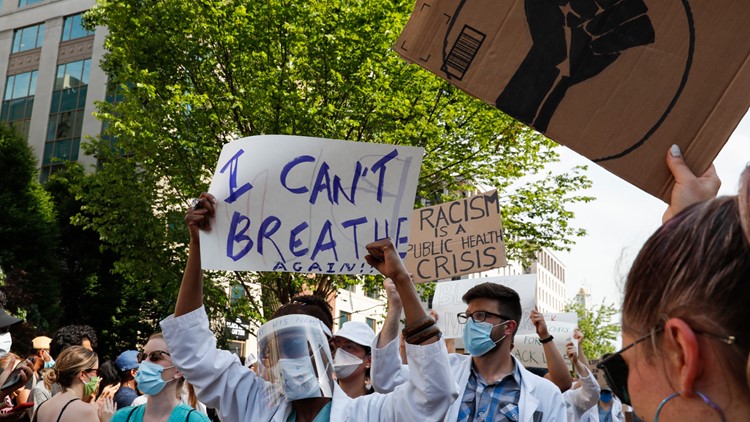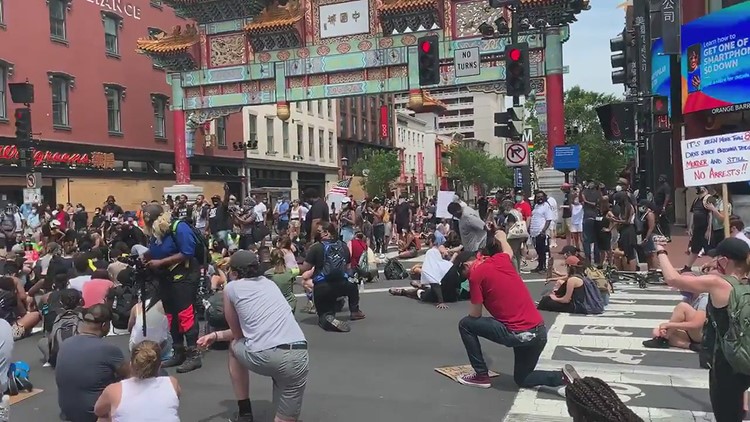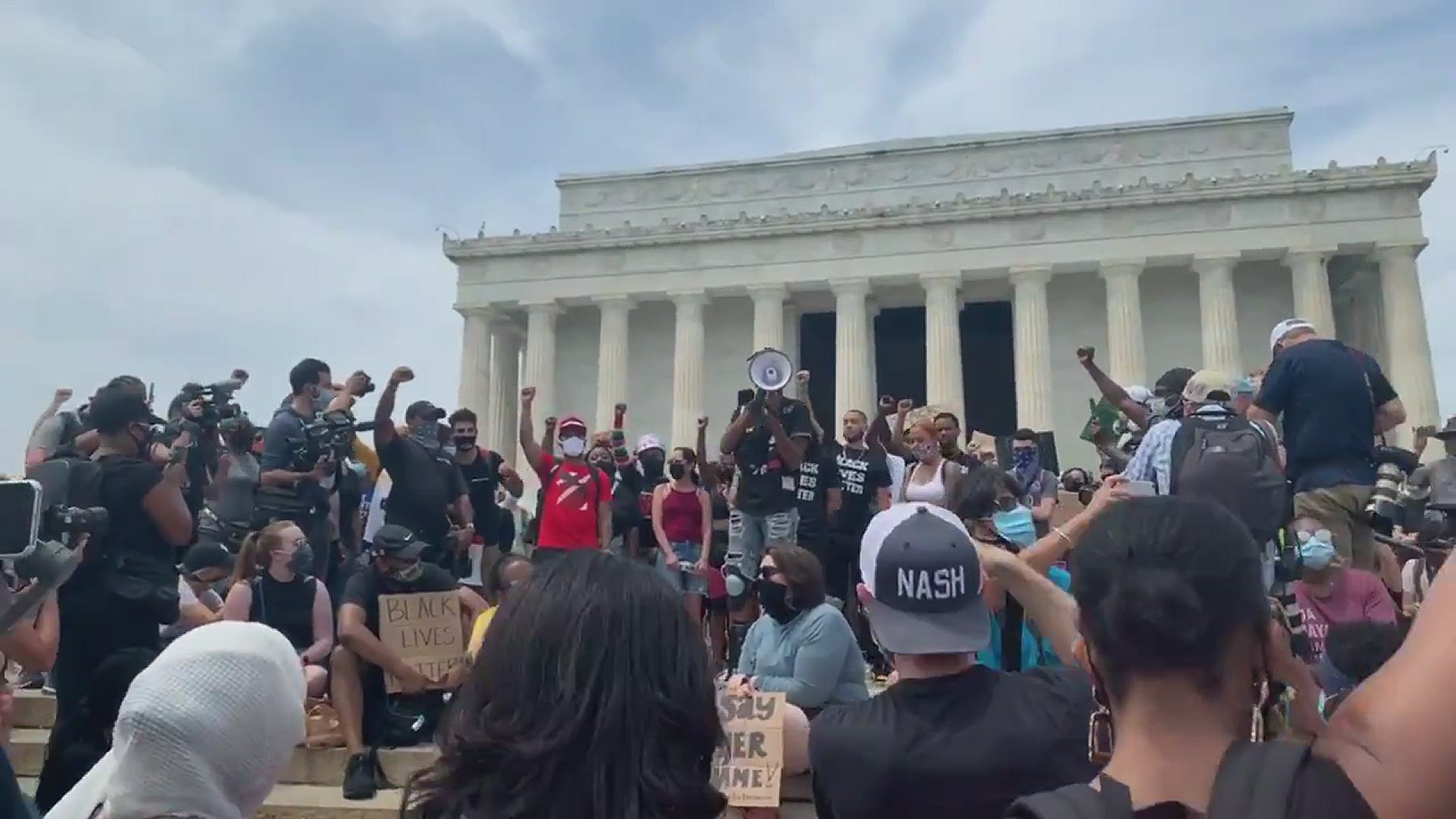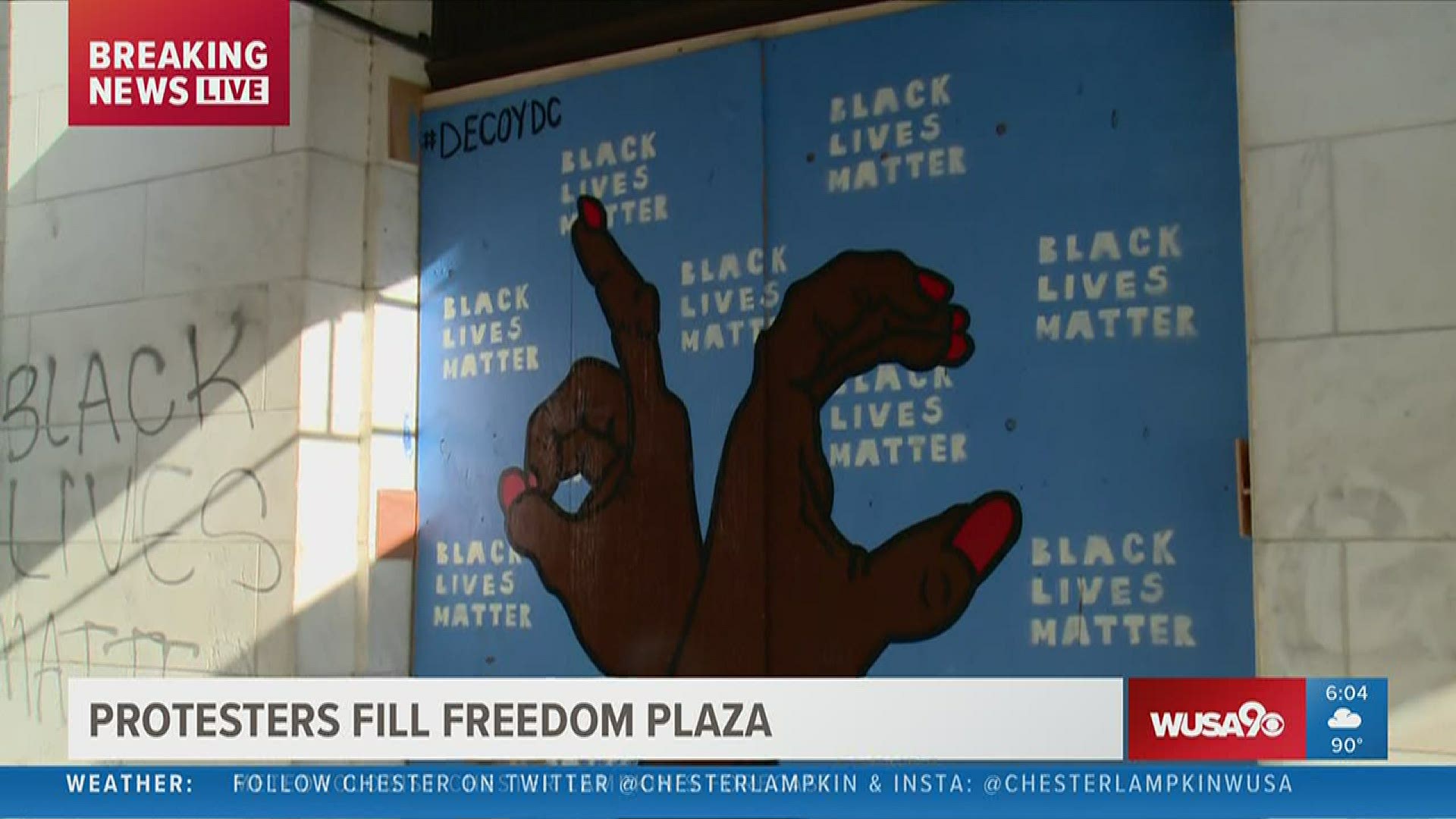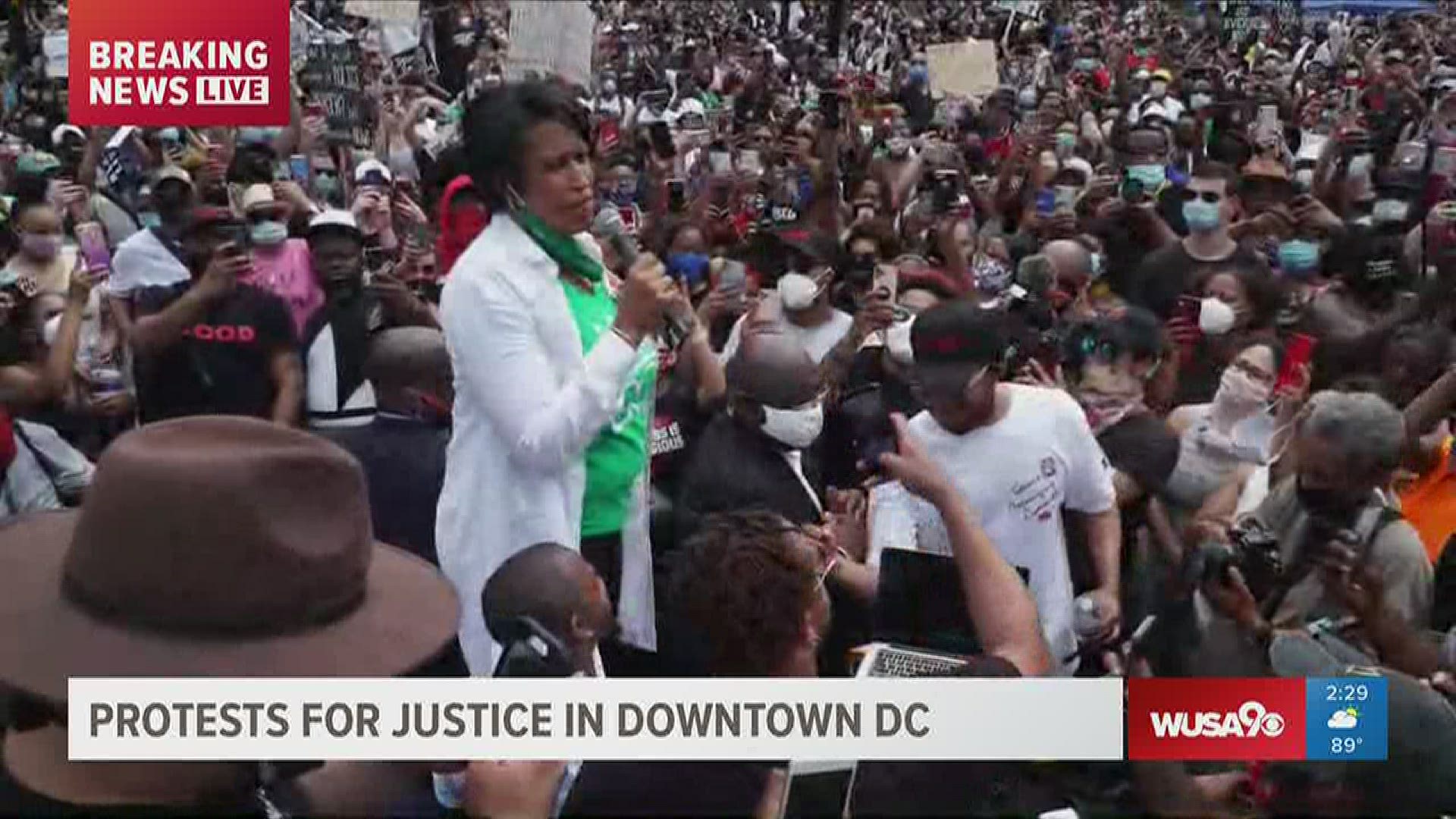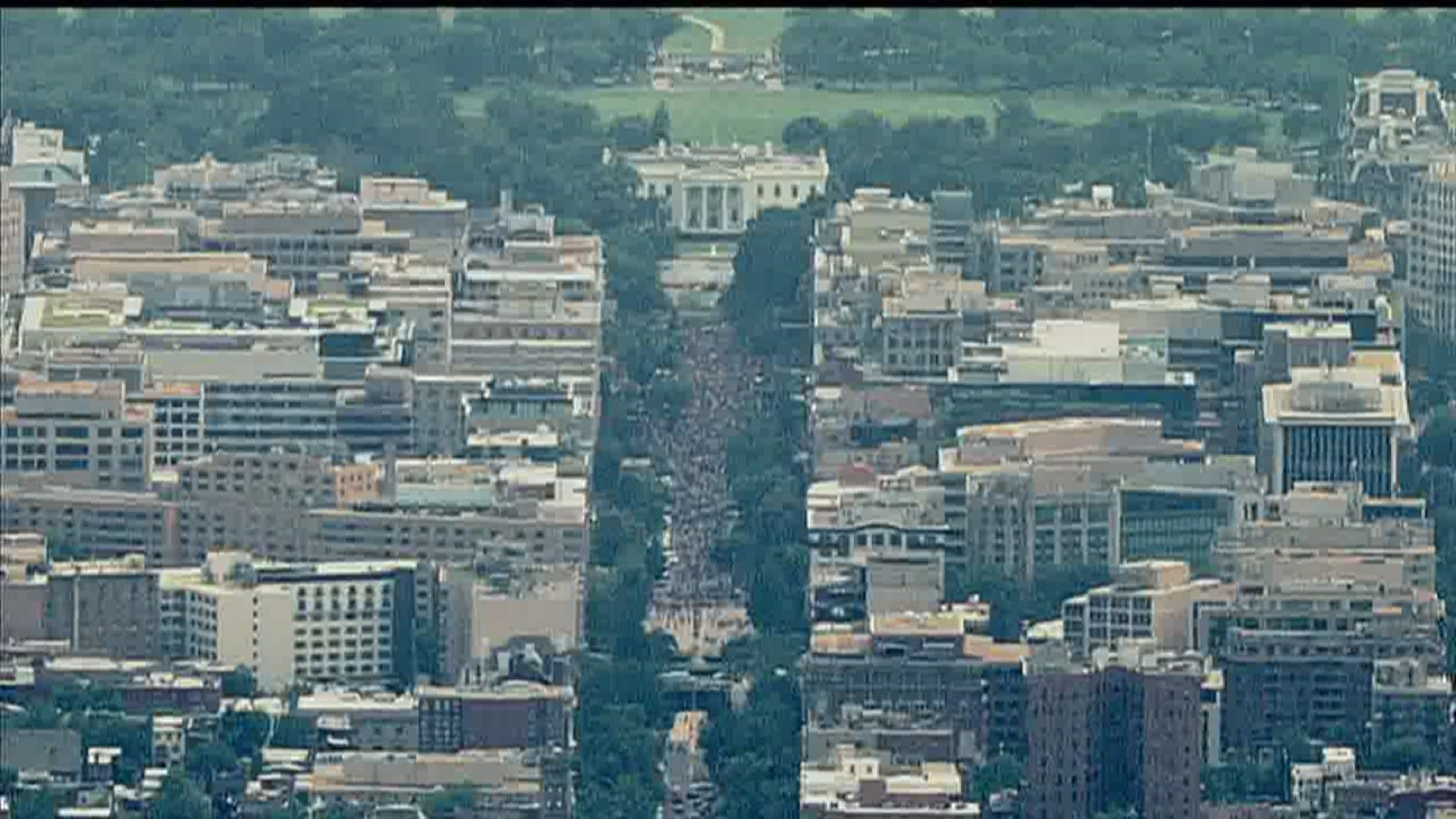WASHINGTON — Tens of thousands of people converged on Washington, D.C., on Saturday, marking the largest crowds yet during a historic week of protests demanding an end to police brutality and systemic racism.
In D.C, Saturday marked the ninth consecutive day of protests over the killing of George Floyd, a black man, by white Minneapolis police officer Derek Chauvin. All four officers involved in the arrest that ended in Floyd's death have now been criminally charged, with Chauvin facing the most serious charge of second-degree murder.
Protests began on the steps of the Lincoln Memorial, where, nearly 40 years ago, civil rights leaders like Martin Luther King Jr. and John Lewis demanded the same sorts of change.
By mid-afternoon, groups from Arlington and Prince George's County had joined the swelling numbers in D.C. Lafayette Square, Freedom Plaza and the newly christened Black Lives Matter plaza all hosted thousands of protesters each – some handing out fliers to inform people of their rights, others blaring go-go music, and still others camping outside the D.C. Mayor's Office to demand an end to stop and frisk in the District.
PHOTOS: Biggest crowd of protesters yet in DC
Even with huge crowds of people marching through the city – which just days earlier had seen tense confrontations between federal security officers and protesters – things remained calm and peaceful, and as of 9:00 p.m., DC Police confirmed there had been no protest-related arrests so far.
Watch below to take a look at how the historic day took shape, and scroll further for highlights from the individual protest spots around the city:
LINCOLN MEMORIAL
Beginning at noon, protesters began gathering for a “We Want Change” rally on the steps of the Lincoln Memorial. The protesters called for an end to systemic racism, and shared their stories of participating in previous marches for justice. Others said taxpayers cannot continue to pay for the resources police are using against them, like tear gas, shields and guns.
The Lincoln Memorial has been a beacon for civil rights leaders for generations. It was the site of the "I Have a Dream" and "This is the Moment" speeches by Rev. Dr. Martin Luther King Jr. and Congressman John Lewis. On Saturday, protesters echoed the same sentiments they spoke in 1963.
“My job on the regular, every day is to encourage people. How can I encourage people when I don’t believe in the system that is killing us? Literally killing us," one speaker said Saturday. "What we’re fighting for today… is anybody confused right now? We’re fighting for justice. Because we’re tired of just getting a charge and not a conviction."
Park Police told WUSA9 they were closing the Lincoln Memorial around 3:30 p.m. due to a large gathering of demonstrators heading that way.
ARLINGTON MEMORIAL BRIDGE
Hundreds, if not more than a thousand people marched across the Arlington Memorial Bridge from Virginia to the White House on Saturday as part of the day’s protests. Holding signs and their hands in the air, the marchers chanted “Hands up, don’t shoot!” as they walked for more than an hour into the city.
“I think it’s injustice and system racism,” one marcher told WUSA9. “I think we all have to stand up against that and stand with the people who are demanding dismantling systemic racism and how the police profile black people and people of color.”
The Arlington March for Black Lives, as it was called, began at the Arlington Courthouse. Its route took it past the Iwo Jim Memorial and then across Arlington Memorial Bridge to join other groups at the Lincoln Memorial and then Lafayette Park.
RELATED: Hundreds march into D.C. across Arlington Memorial Bridge demanding justice for George Floyd
DUPONT CIRCLE
Around 5 p.m., a queer and trans rally denouncing police violence and supporting "different communities in resistance" began in DuPont Circle. The rally's numbers quickly swelled as Justice for George Floyd protesters linked up to it, linking the fight for LGBTQ equality to the calls for racial justice.
U.S. CAPITOL
Outside the Capitol Building, protesters organized by the UDC Black Law Student Association and others began assembling around 1 p.m., bringing food and water for participants and passing out “Know Your Rights” fliers.
“We are here to educate and demand correction for the injustices in our nation right now,” a representative from the organization told WUSA9.
CHINATOWN
A large group of protesters stopped in Chinatown shortly after 6:00 p.m. to kneel for 8 minutes and 46 seconds – the amount of time Officer Derek Chauvin had his knee on George Floyd's neck.
BLACK LIVES MATTER PLAZA
The city of D.C. painted an enormous “Black Lives Matter” mural Friday on the newly christened Black Lives Matter Plaza – the section of 16th Street near the White House.
Protesters added a "Defund the Police" painted mural along 16th Street next to the yellow "Black Lives Matter" mural.


Around 3 p.m., the group White Coats for Black Lives joined the Justice for George Floyd protests, with doctors, nurses and other health care professionals adding their voices to the chorus demanding changes.
While protests went on nearby, D.C. artist Chris Lynch began painting an inspirational mural on a boarded-up window near Black Lives Matter Plaza.
At around 2:30 p.m., D.C. Mayor Muriel Bowser arrived and began speaking to the crowd at the plaza.
Later in the afternoon, protesters began blaring D.C.'s signature go-go music on 16th Street after a go-go rally at Freedom Plaza.
LAFAYETTE SQUARE
Lafayette Square has been the site of some of the most contentious moments of the past week’s protests in D.C., including the use of tear gas and sting ball grenades to forcefully clear out protesters before President Donald Trump walked to St. John’s Church for a photo-op on Monday.
On Saturday, however, things remained calm, with protesters holding signs and chanting outside the barricades.
Protesters hung a Black Lives Matter banner on the fences that separate protesters from Lafayette Square.

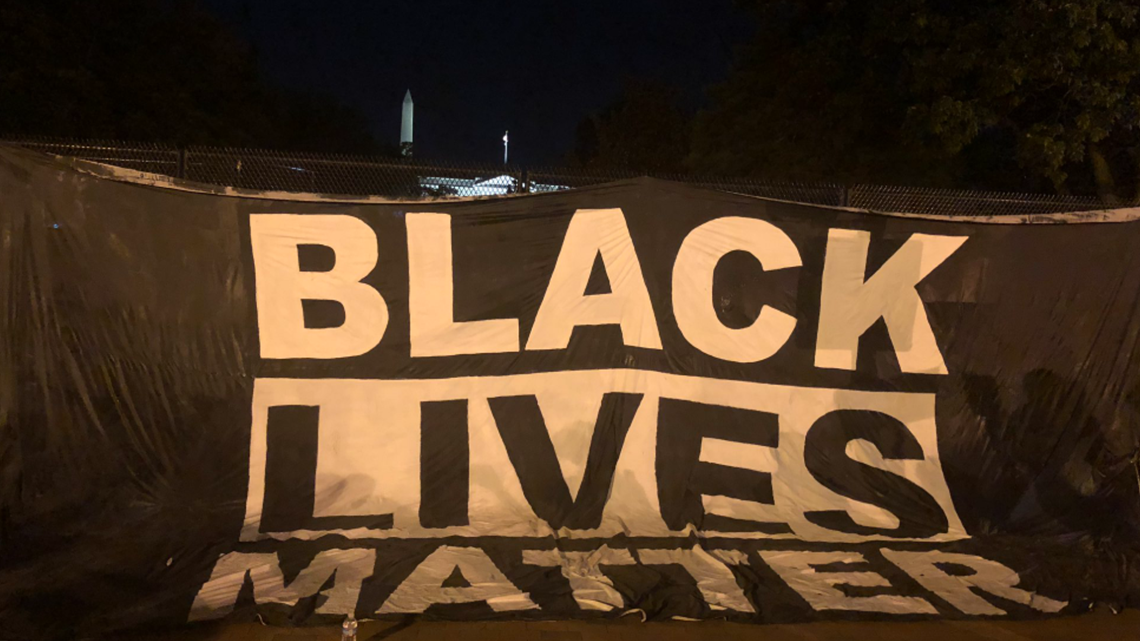
FREEDOM PLAZA / DC MAYOR'S OFFICE
Originally built in 1980 as Western Plaza, D.C.’s Freedom Plaza was renamed in 1988 in honor of the Rev. Dr. Martin Luther King Jr., who worked on his famous “I Have a Dream” speech in the nearby Willard Hotel.
Shortly before 7 p.m., a large crowd assembled at Freedom Plaza began singing “We Shall Overcome,” a gospel song with roots in the civil rights movement going back to the Charleston cigar workers strike in 1945.
Across from the plaza, demonstrators gathered outside the Wilson Building, the home of the D.C. Mayor's Office. Speakers called for the mayor to defund the Metropolitan Police Department and to end stop and frisk in the city.



